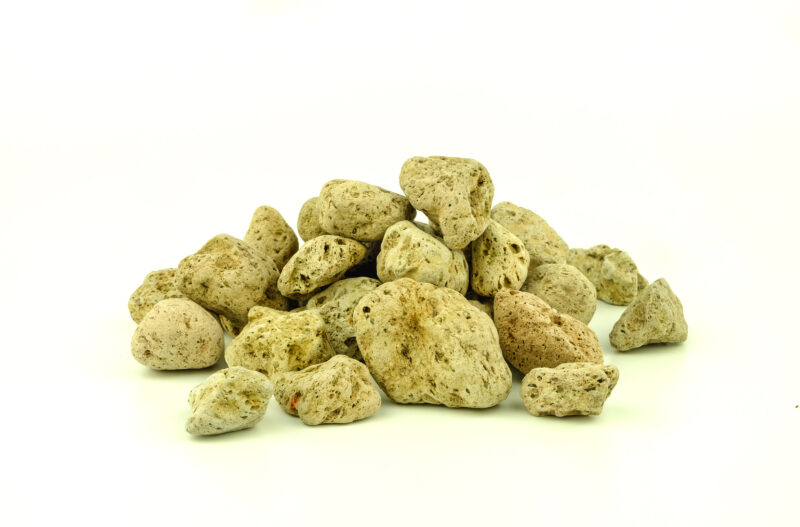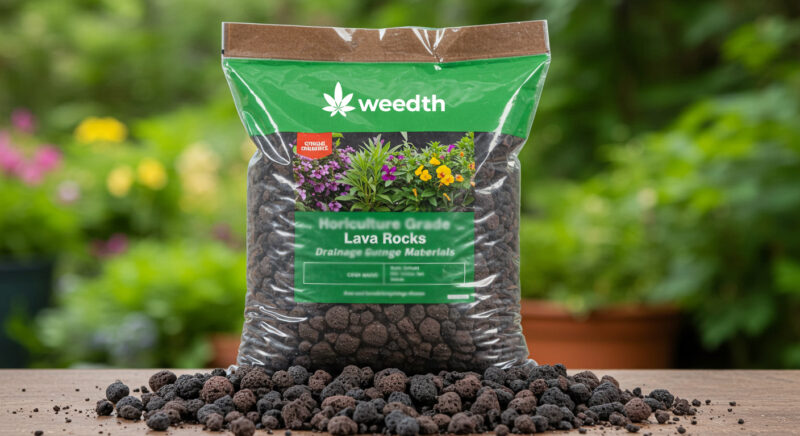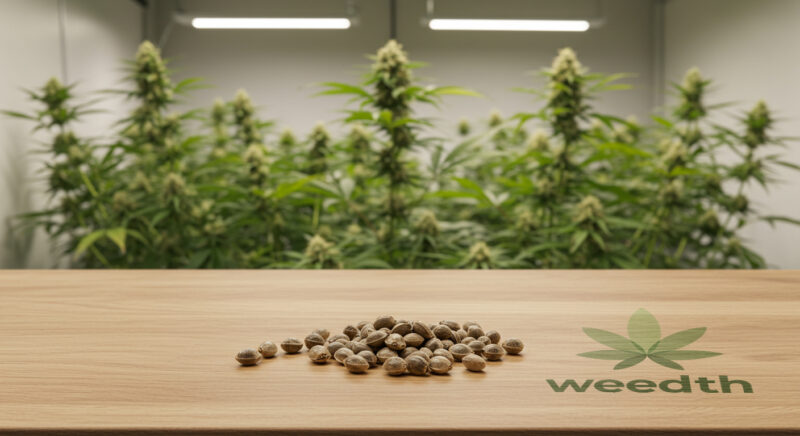Indoor Grow Mediums
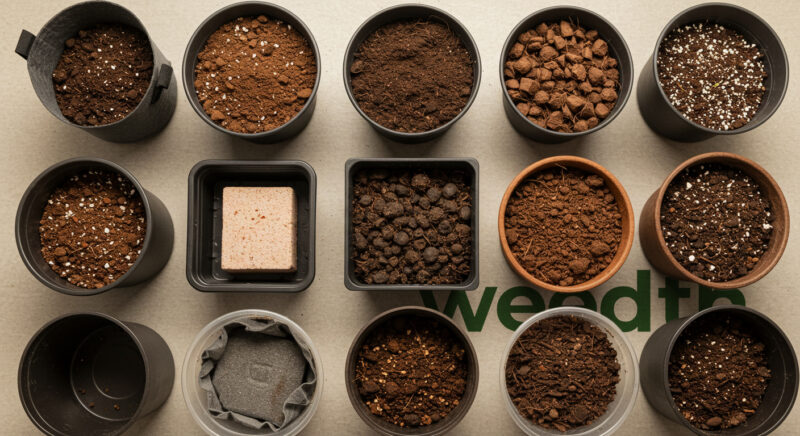
Choosing the right grow medium is one of the most crucial decisions you’ll make in indoor grow. The grow medium is essentially the material that supports your plant’s roots, holding moisture, delivering nutrients, and allowing oxygen to reach the root zone. Think of it as the foundation upon which your entire grow operation is built. Get it right, and your plants will thrive with strong, healthy roots. You could face stunted growth, nutrient deficiencies, or worse if you get it wrong.
Cannabis or any plant needs three basic elements to grow: water, nutrients and oxygen. A proper grow medium helps provide these elements in just the right amounts. When you’re growing indoors, you don’t rely on natural soil ecosystems, so the medium you choose must support the roots by simulating these natural processes.
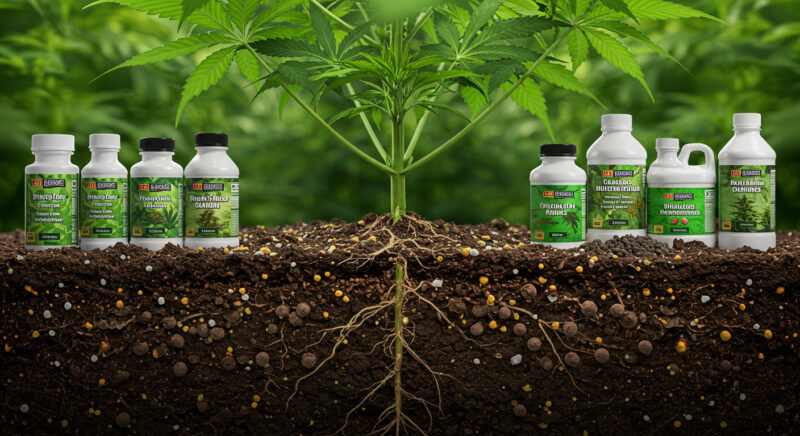
Let’s break down the most common indoor grow mediums, focusing on what they offer, their strengths, and potential drawbacks. Whether you’re growing in a hydroponic system, running a soilless setup, or experimenting with a hybrid approach, understanding your medium is key to a successful harvest.
What is Grow Medium?
So, what exactly is a grow medium? Essentially, it’s the material that allows your plants to root, grow, and absorb nutrients. Think of it as the soil or substrate where the roots live, grow, and spread out to take in water, nutrients, and oxygen. Depending on what type of grow medium you use, you’ll have different levels of water retention, aeration, and nutrient delivery. Some grow mediums are rich in organic material that naturally feeds your plants, while others are completely inert, offering no nutrients but acting as a carrier for nutrient-rich water in hydroponic systems.
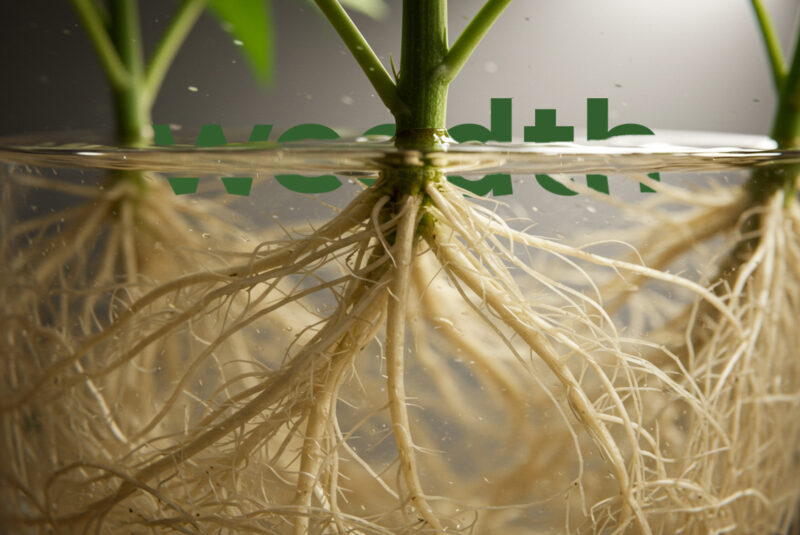
The right grow medium will allow for optimal root development and the efficient uptake of water and nutrients, all while providing enough oxygen to keep those roots healthy. Soil-based grows, you’ll benefit from a medium that can naturally buffer pH levels and provide a home for beneficial microorganisms. In soilless and hydroponic setups, you’ll need to take more control of nutrients, but you’ll often get faster growth and higher yields as a result.
Importance of Choosing the Right Medium
Choosing the right grow medium is more than just filling a pot—it’s about setting the stage for your plant’s entire lifecycle. Every medium has its own characteristics when it comes to water retention, aeration, nutrient availability, and pH stability. Your chosen medium will determine how often you need to water, how well your plants absorb nutrients, and your roots develop.
Water Retention: Some grow mediums hold water longer like soil, meaning you won’t need to water as frequently. Other mediums, such as perlite or clay pebbles, drain quickly and require more frequent watering. Striking the right balance is crucial because too much water and your plants will suffocate or too little and dry out.
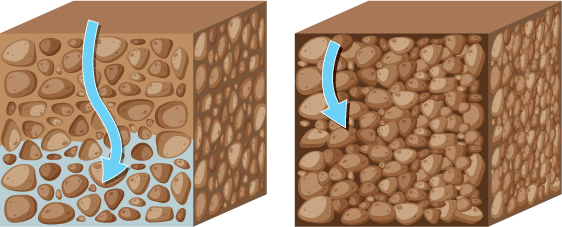
Aeration: Roots need oxygen, and a well-aerated grow medium ensures that they can breathe. If your medium is too dense or holds too much water, it can drown the roots, leading to poor growth or even death. Many growers use lighter materials like perlite or coco coir for better aeration, which allows oxygen to reach the roots more easily.
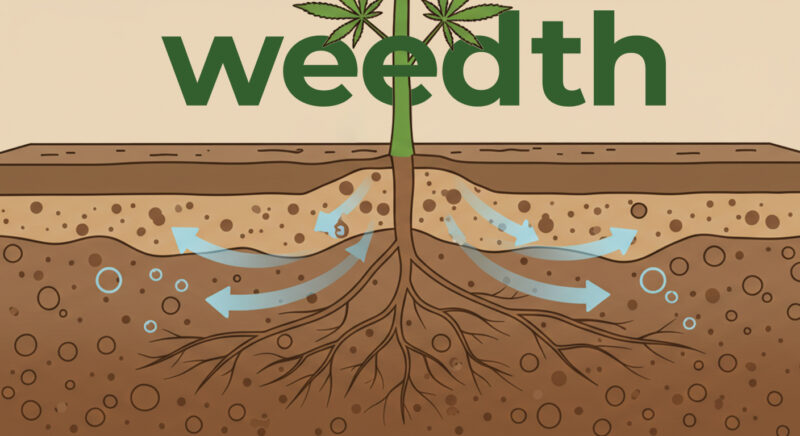
Nutrient Delivery: The medium also affects how well your plants absorb nutrients. Organic soil is rich in nutrients that feed your plants slowly over time, but in hydroponic systems, you control every drop of nutrients your plants get. If you’re using an inert medium like rock wool or clay pebbles, you’ll need to be on top of your feeding schedule to make sure your plants get exactly what they need.
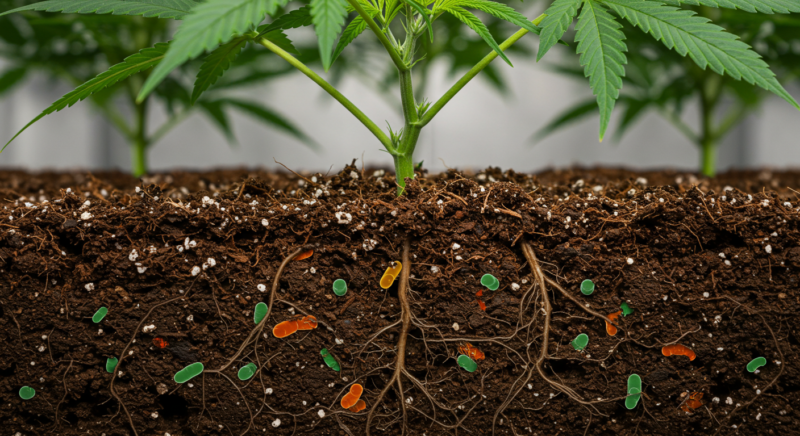
pH Balance: Different grow mediums have different pH levels, and cannabis needs a specific pH range to absorb nutrients properly. Soil-grown cannabis prefers a pH between 6.0 and 7.0, while hydroponically grown plants thrive with a pH range of 5.5 to 6.5. If your pH is off, your plants can suffer from the nutrient lockout, where they can’t absorb the nutrients they need even if they’re present in the medium.
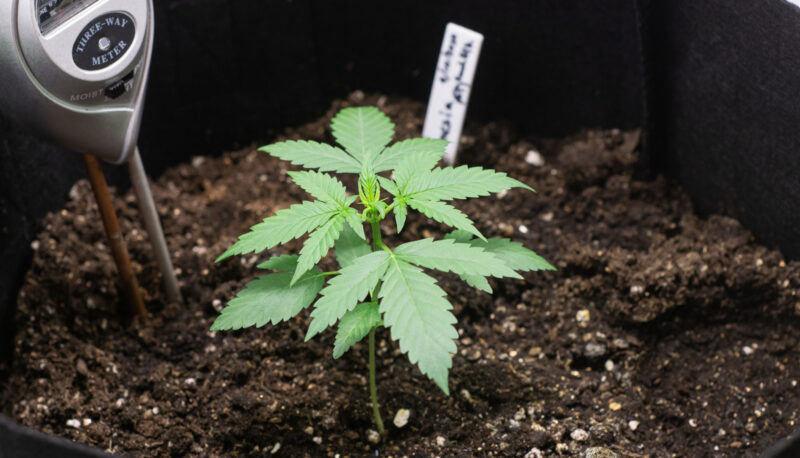
Maintenance and Ease of Use: Soil is one of the more forgiving growing mediums and usually doesn’t require much adjustment. For beginners, starting with soil is usually the easiest because it helps regulate pH and already has nutrients. On the other hand, hydroponic systems or soilless media like coco coir give you more control but require more precision. If you’re growing in an inert medium, you’ll need to monitor pH, nutrient levels, and moisture carefully to ensure healthy growth.
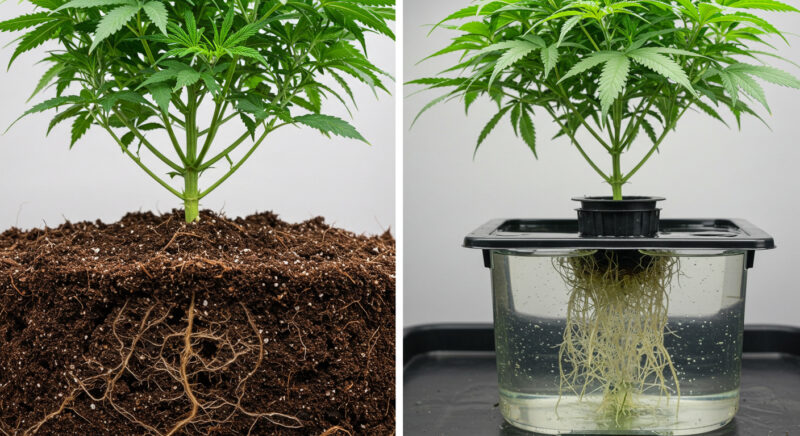
Choosing the right grow medium is about creating the ideal environment for your plants to thrive. Your decision will determine the daily maintenance of your grow and how easily your plants access what they need to grow strong and produce high yields.
Common Types of Grow Mediums
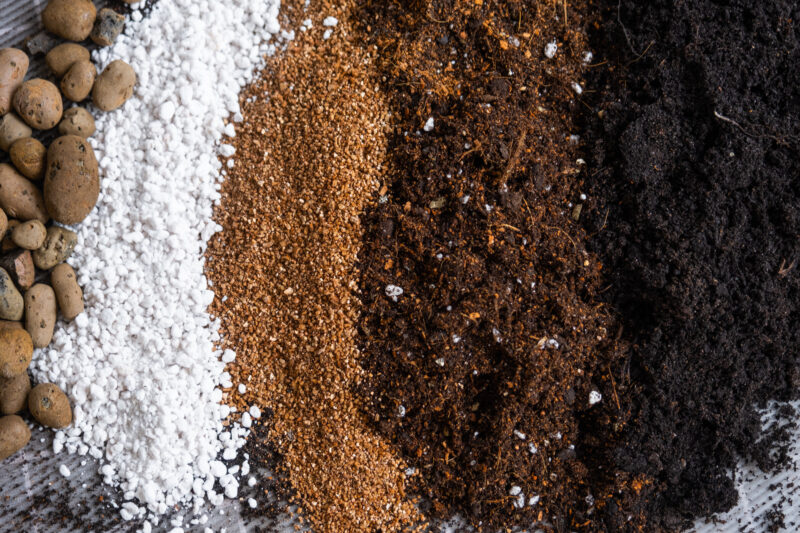
Indoor cannabis grow has evolved over the years, and there is a variety of grow mediums you can use. Let’s take a look at some of the most popular choices and what makes them unique.
Soil: This is the most natural medium you can use, and it’s been the go-to for cannabis growers for generations. Soil is rich in organic matter and beneficial microorganisms that help feed the plant over time. Good soil naturally buffers pH levels and holds moisture well, making it ideal for beginners. The downside? Soil can be slower than other mediums when it comes to delivering nutrients, and you’ll need to monitor drainage closely to avoid root rot. Look for high-quality organic soils, ideally those mixed with perlite for better aeration.
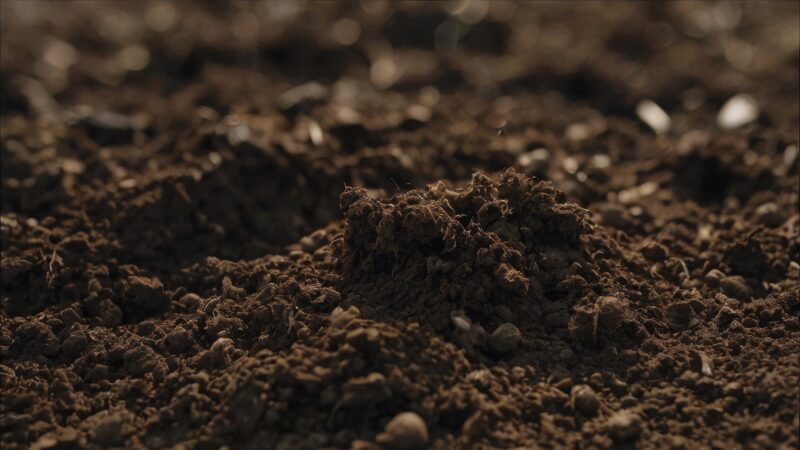
Coco Coir: Made from the husk of coconuts, coco coir is an increasingly popular soilless medium. It retains water better than soil and offers excellent aeration, allowing roots to breathe while maintaining consistent moisture levels. Coco coir is inert, meaning it has no nutrients on its own, so you’ll need to feed your plants regularly. However, coco's light structure and moisture retention, many growers find that coco produces faster growth than traditional soil.
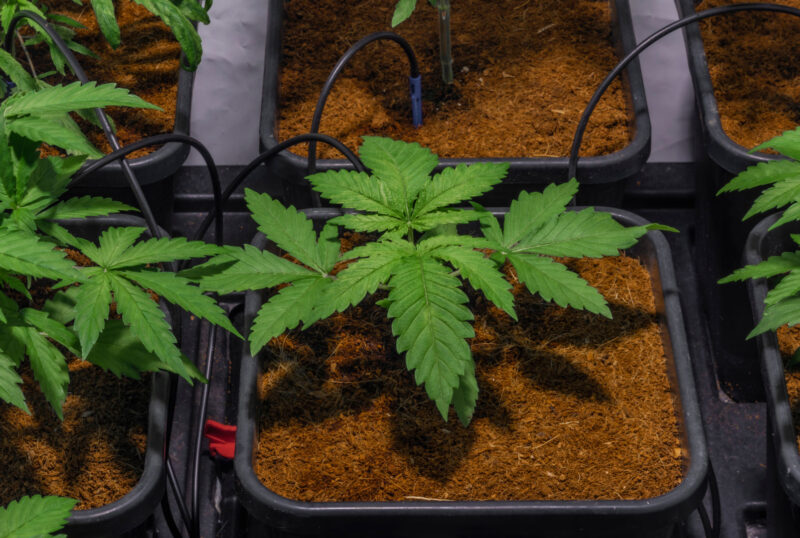
Perlite and Vermiculite: These are both lightweight, inorganic materials used to improve the structure of other grow mediums. Perlite is a volcanic glass that provides excellent drainage and aeration, making it ideal for preventing root rot. Vermiculite, retains water and nutrients, slowly releasing them to the roots. These two are often mixed into soil or coco to help balance water retention and airflow.
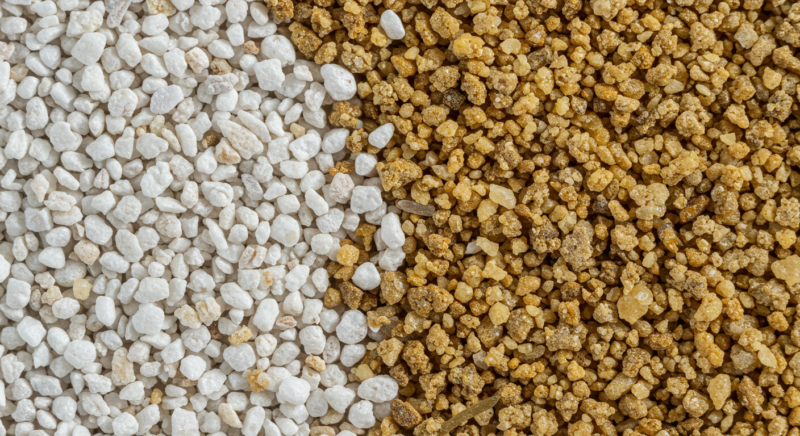
Rockwool: A staple in hydroponic systems, rockwool is made from spun volcanic rock. It’s great for retaining moisture and providing oxygen to the roots, but it has no nutrients of its own, so you’ll need to rely on a nutrient-rich water solution. Rockwool is popular for germination and early-stage growth but requires careful pH monitoring to ensure healthy plants.
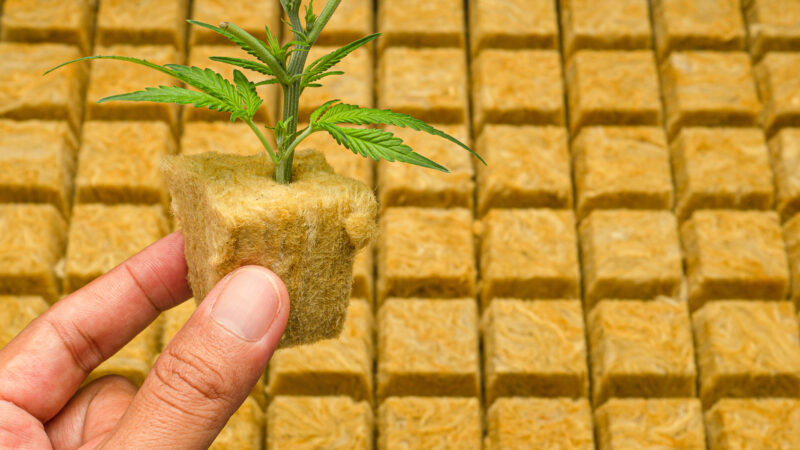
Clay Pebbles (Hydroton): Used mostly in hydroponic setups, clay pebbles are an inert medium that provides excellent drainage and aeration. These round pebbles are ideal for systems that involve frequent watering, like drip irrigation or flood and drain. Clay pebbles can be reused after cleaning, making them a cost-effective choice for growers looking for sustainability.
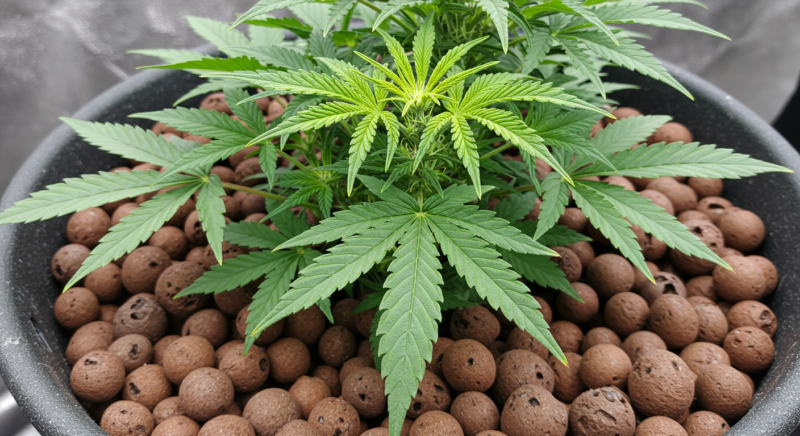
Peat Moss: Peat moss is a popular organic growing medium, often mixed with other substrates like perlite to improve aeration. It holds water well and provides a rich environment for roots, but it tends to be very acidic, requiring careful pH management. Peat moss is often part of soilless mixes that aim to combine moisture retention with good oxygen flow.

Hydroponic Systems: Hydroponic systems do not require soil instead, they use water as the primary medium for nutrient delivery. In systems like deep water culture (DWC) or aeroponics, roots are suspended in air or water, allowing them to absorb nutrients directly from the solution. Hydroponics offers faster growth rates and higher yields but requires more precise control over pH, nutrients, and water levels.
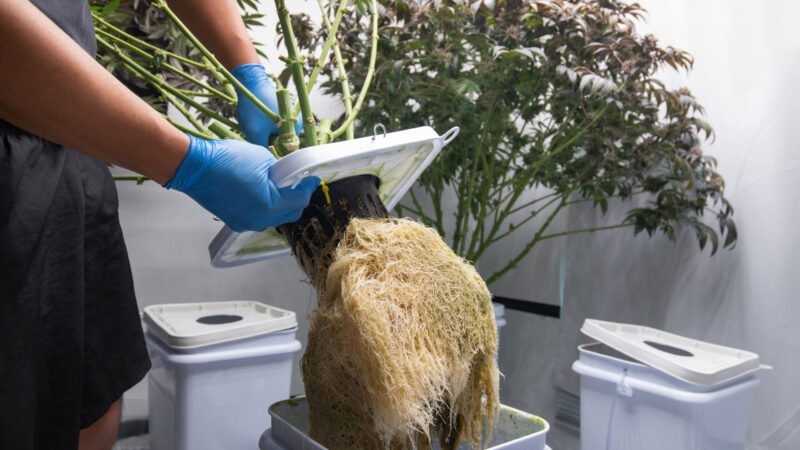
Growing with Soil
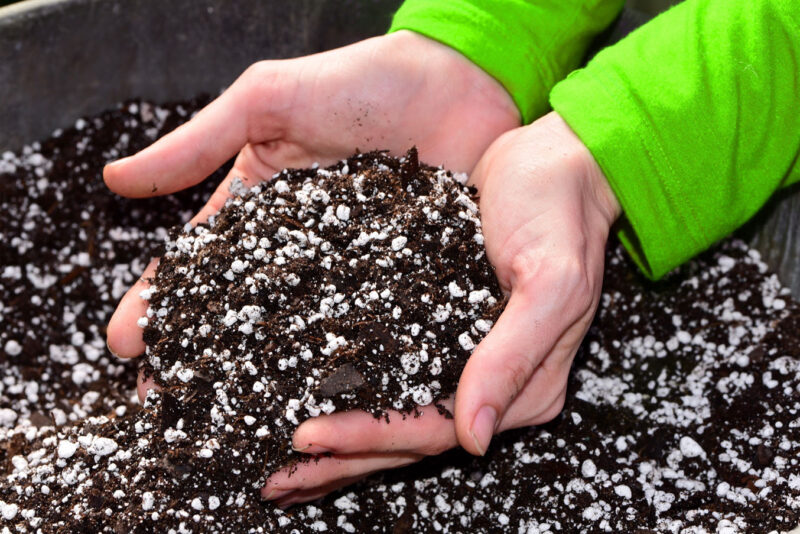
Soil is one of the oldest and most reliable methods for cultivation. It offers a natural, rich medium that’s easily accessible, cost-effective, and perfect for both beginners and experienced growers alike. While hydroponic systems promise faster growth and higher yields, many cultivators believe that the flavor and aroma of soil-grown cannabis are superior, thanks to the complex interactions between the soil’s microorganisms and the plant’s root system. Soil provides an excellent buffer, giving growers a bit more leeway with watering and nutrients compared to more sensitive soilless systems.
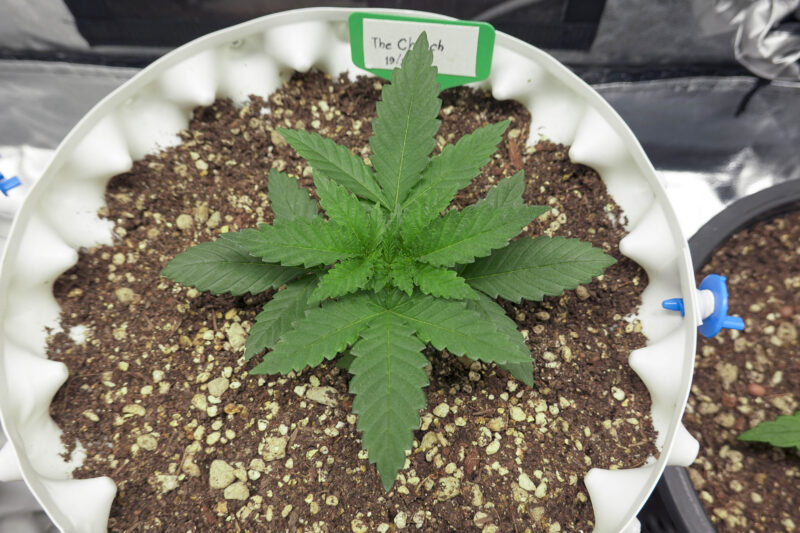
Soil is the best choice for beginner growers due to its simplicity and easy start-up. All you need is good-quality soil, containers, and some basic tools to grow your first plants. Even with minimal experience, soil offers a forgiving environment where minor mistakes won’t devastate your crop. However, growing in soil isn’t without its challenges—it can be tricky to maintain consistent moisture levels, nutrient availability, and pH balance. But with the right approach, soil can yield exceptional results.
Why Choose Soil?
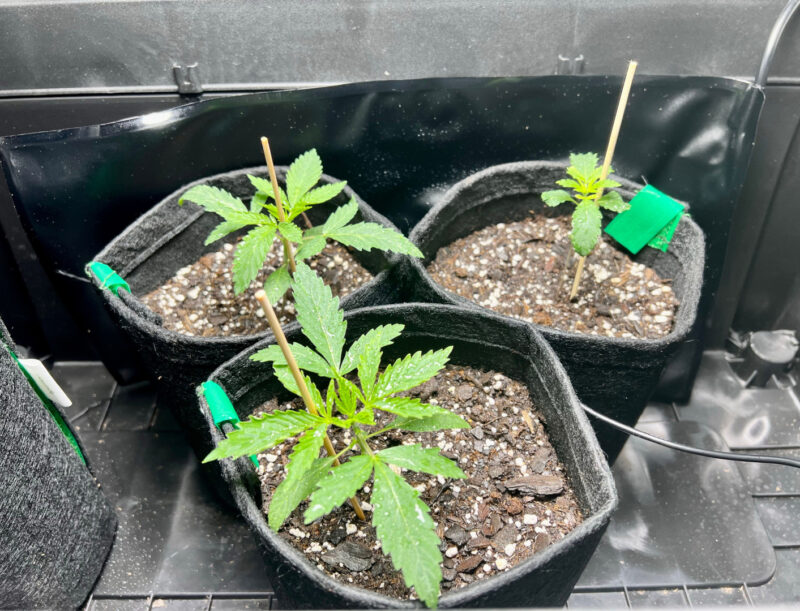
The biggest advantage of soil is its natural buffering ability, which helps to regulate water and nutrient levels. Soil holds water for longer periods, meaning that you don’t need to water your plants as frequently as in other mediums like coco coir or rock wool. It also provides a natural source of nutrients through organic matter, which can feed your plants slowly over time. Cannabis grown in soil is known for its superior taste and aroma, making it the preferred choice for experienced growers who seek rich flavors and aromatic profiles.
However, soil comes with a few downsides. It’s heavier and more difficult to work with than hydroponic systems, and managing moisture levels, nutrient availability, and pH balance can be more challenging. Soil can also be messy and requires transplanting as your plants grow.
Function of Soil in Cannabis Grow
Cannabis is a hardy plant that grows best when its basic needs are met. Soil plays a pivotal role in providing plants with essential nutrients, water, and oxygen. More than just a growing medium, soil acts as an ecosystem for roots, fungi, and microorganisms, all contributing to a plant’s overall vitality.
The type of soil you choose will impact key growth factors such as:
Water Retention and Drainage: Cannabis plants need a delicate balance between water retention and drainage. Too much water can lead to root rot, while too little can cause the plants to dry out and wilt. The texture and composition of soil determine how well it holds water and drains excess moisture.
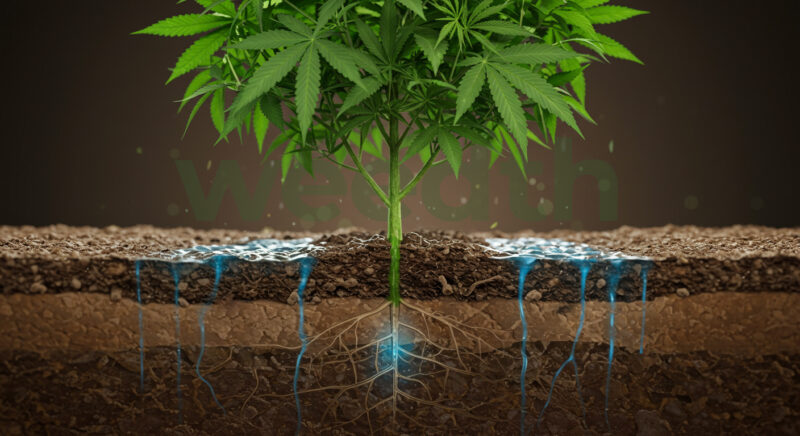
Nutrient Availability: Healthy cannabis plants require a mix of macronutrients (like nitrogen, phosphorus, and potassium) and micronutrients (such as calcium, magnesium, and sulfur). Soil that is too nutrient-poor will starve the plants, while soil that is too rich can cause nutrient burn or lockout.
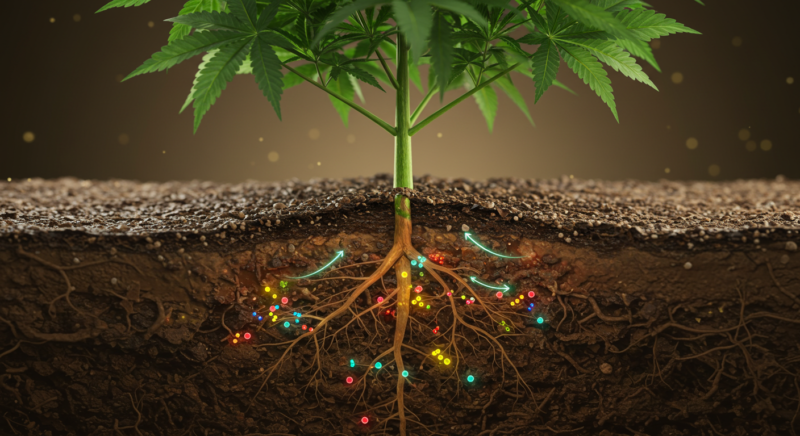
Root Development: Cannabis roots need a well-aerated soil to expand and absorb nutrients effectively. Dense, compacted soil can stifle root growth and lead to poor nutrient uptake, reducing overall plant health.
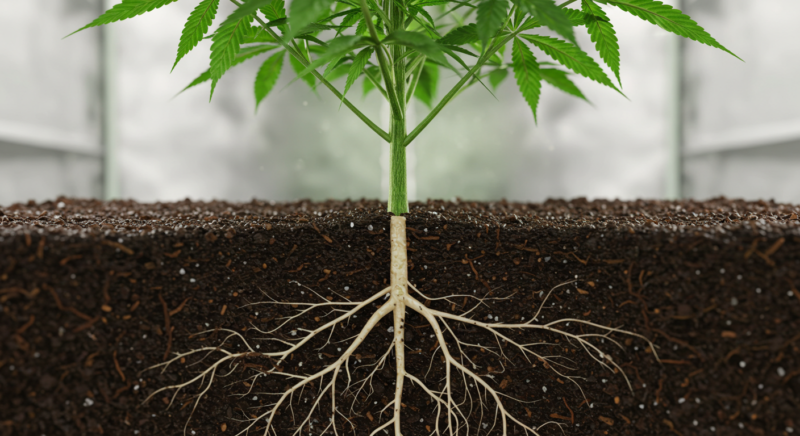
Microbial Activity: Soil isn’t just a passive environment—it’s a dynamic ecosystem filled with microorganisms that help break down organic matter, making nutrients more available to plants. A healthy, living soil supports beneficial bacteria, fungi, and insects, which all contribute to robust plant growth.
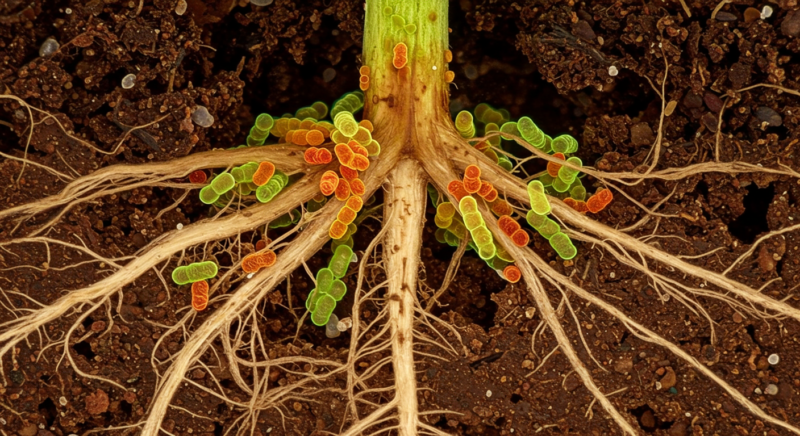
Choosing the Right Soil for Cannabis
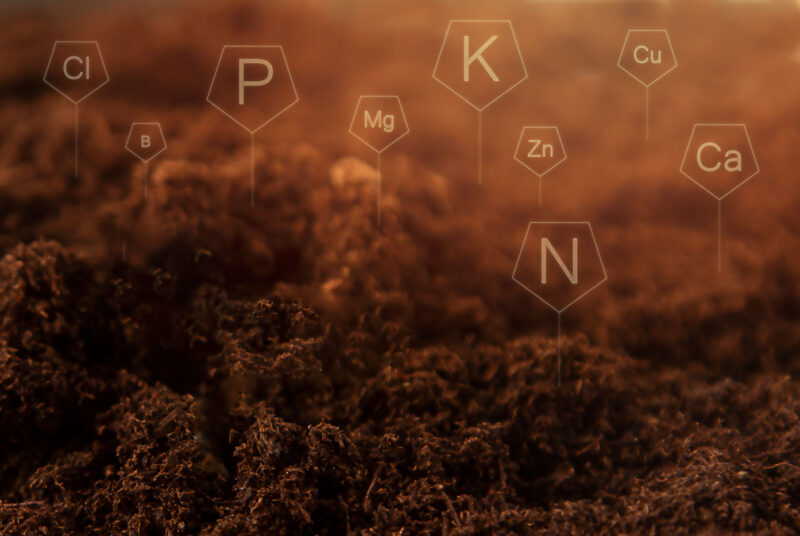
Not all soil is created equal, and choosing the right soil is crucial for ensuring your plants grow to their full potential. Cannabis requires a well-draining, nutrient-rich medium that provides the right balance of water retention, aeration, and nutrients. Here are some key factors to consider when selecting soil for cannabis:
Drainage: One of the most important characteristics of good soil for cannabis is its ability to drain excess water. Roots need both water and oxygen to grow, and soil that retains too much moisture can suffocate the roots, leading to root rot. To ensure proper drainage, look for soils with added perlite or vermiculite, which improve airflow and prevent water from pooling at the roots.
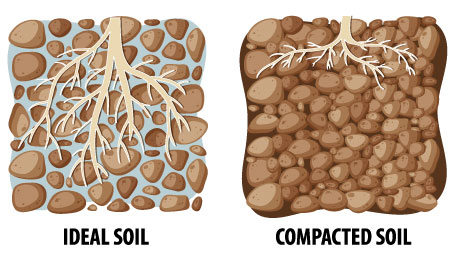
Texture and Structure: The best soil for cannabis is loamy, meaning it has a balance of sand, silt, and clay. Loamy soil provides a good mix of water retention and aeration, ensuring that the roots have access to both moisture and oxygen. Avoid soils that are too clayey, as they tend to become waterlogged, or sandy, as they drain too quickly and may require more frequent watering.
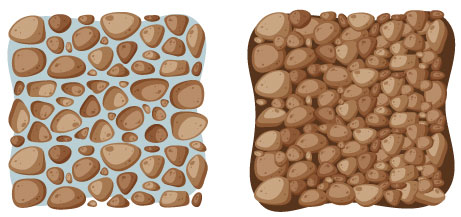
Nutrient Content: Cannabis requires a wide range of nutrients, including nitrogen (N), phosphorus (P), and potassium (K), as well as secondary nutrients like calcium, magnesium, and sulfur. Many commercial soils come pre-fertilized with nutrients, but these may only last for the first few weeks of growth. After that, you’ll need to supplement your soil with additional nutrients, depending on the plant’s growth stage. Organic soils often contain compost, worm castings, or bat guano, which provide slow-release nutrients throughout the grow cycle.
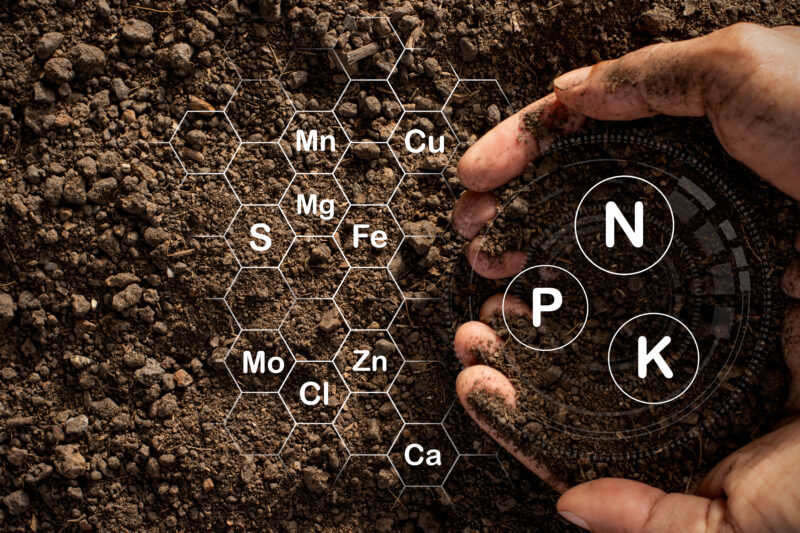
pH Level: Cannabis thrives in slightly acidic soil with a pH level between 6.0 and 7.0. If the soil’s pH is too high or too low, it can prevent the plant from absorbing essential nutrients, leading to nutrient lockout. Many high-quality soils are already pH-balanced, but you can always adjust the pH using lime (to raise pH) or sulfur (to lower pH) if necessary.
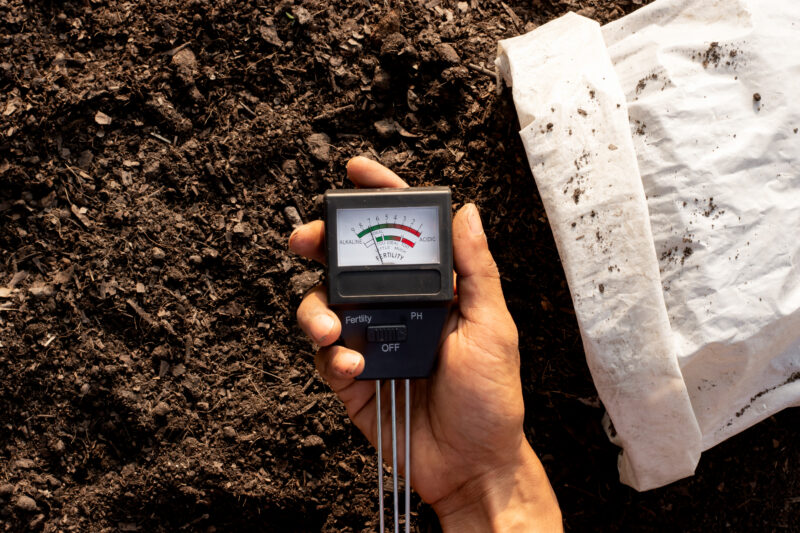
Organic vs. Synthetic Soils: Organic soils are rich in natural ingredients like compost, manure, and earthworm castings. These soils promote microbial activity, which helps break down organic matter and deliver nutrients to the plants slowly. Organic growing is often associated with producing higher-quality, more flavorful buds. Synthetic soils, on the other hand, are often enriched with chemical fertilizers that deliver nutrients more quickly but require more careful management to avoid nutrient imbalances.
Soil Types
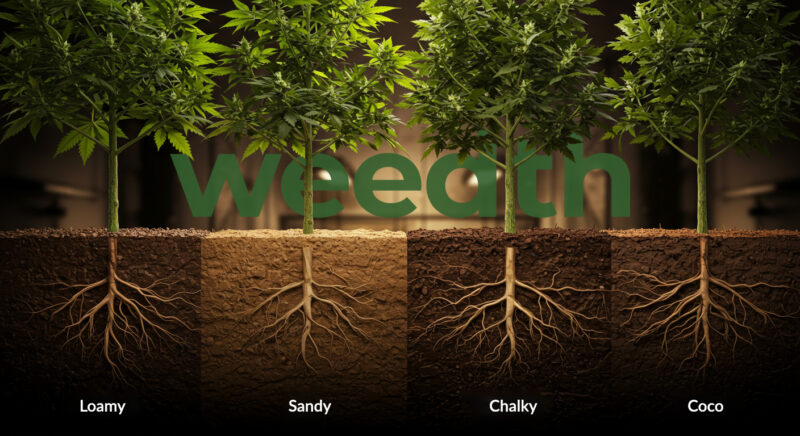
Choosing the right soil is crucial when growing cannabis, as it directly impacts your plants’ overall health, growth rate, and final yield. The soil is the structural base for your plants and determines how well water, nutrients, and air are distributed to the roots. Cannabis plants require specific conditions for optimal growth, so it’s important to understand how different soil types and amendments influence these factors. We’ll explore the most commonly used soil types for cannabis grow and soil amendments that can enhance your grow. Each section also includes a breakdown of advantages and disadvantages to help you make the best decision for your plants.
Understanding Basic Soil Types

All soils are made up of a mixture of sand, silt, and clay particles in varying proportions. These foundational soil types influence how well your cannabis plants receive water, nutrients, and oxygen. While some of these are not ideal on their own, understanding them helps identify what makes a good soil mix and what to avoid.
-
Sandy Soil: Light and quick-draining, but poor at holding water and nutrients.
-
Clay Soil: Heavy and nutrient-rich, yet prone to compaction and poor drainage.
-
Silty Soil: Smooth in texture and holds water better than sand, but may restrict airflow to roots.
-
Peaty Soil: High in organic matter and moisture retention, though acidic and often needs pH adjustment.
-
Chalky Soil: Alkaline and often stony, which can interfere with nutrient absorption.
-
Loamy Soil: A well-balanced blend of sand, silt, and clay. Loam offers excellent drainage, aeration, and nutrient retention, making it the gold standard for cannabis cultivation.
Now that you’re familiar with the basic building blocks of soil, let’s explore the specific soil types most commonly used by cannabis growers.
Potting Soil
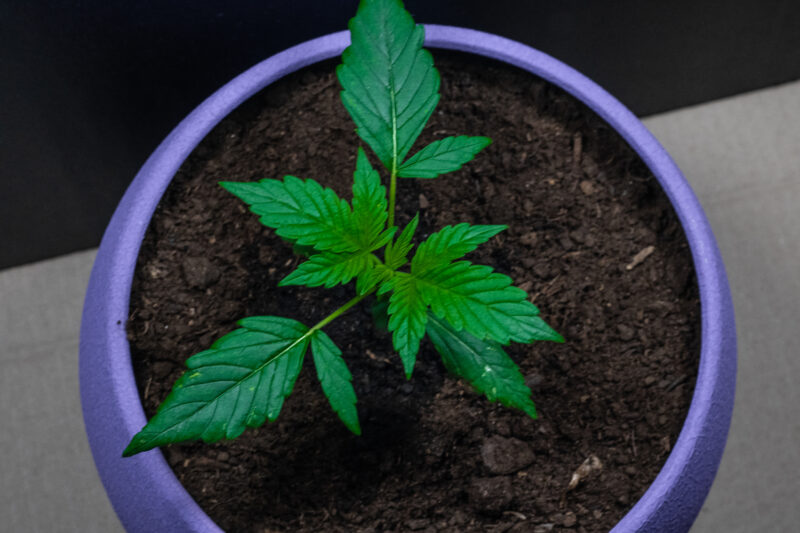
Convenient and Beginner-Friendly
Potting soil is one of the most accessible options for cannabis growers, especially beginners. It’s typically pre-mixed and contains a blend of organic materials like peat moss, compost, perlite, and sometimes bark. Potting soil is designed to offer a balance between water retention and drainage, making it a versatile choice for both indoor and outdoor cannabis cultivation.
Potting soil is often available in various blends, some of which are pre-fertilized, while others are labeled “light mix” to allow for greater control over nutrients. This ease of use makes it a popular starting point for hobby growers and beginners who want something ready to use without too much preparation.
Advantages:
- Widely Available: Potting soil can be found at almost any garden center or hardware store, making it highly accessible.
- Pre-Mixed: Since it’s often pre-mixed, potting soil is convenient and user-friendly, requiring little to no initial amendments.
- Versatile: Suitable for both indoor and outdoor cannabis growing due to its balanced composition.
- Affordable: Potting soil is generally affordable and widely used by home gardeners.
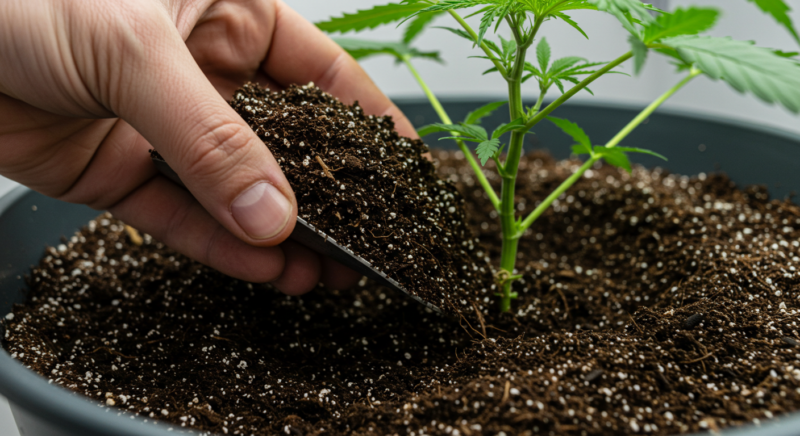
Disadvantages:
- Pre-Fertilized Versions: Some potting soils contain synthetic fertilizers, which may lead to overfeeding during the initial stages of growth. This can result in nutrient burn or imbalances later.
- May Need Aeration Improvements: Depending on the blend, potting soil may compact over time, reducing aeration and drainage. You might need to amend it with materials like perlite or vermiculite for better air circulation.
- Nutrient Control: Pre-fertilized mixes can limit your ability to control nutrient levels, making it difficult to adjust feeding schedules.
Super Soil
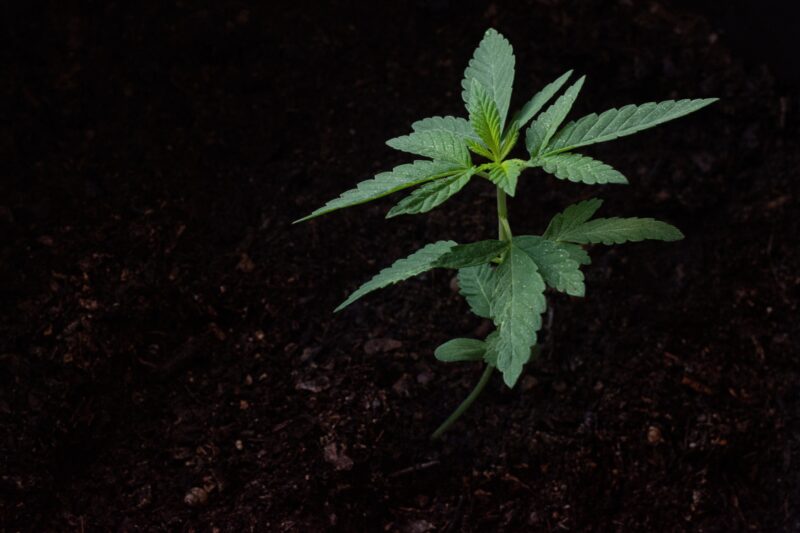
The Ideal Choice for Organic Growers
Super soil is a premium, nutrient-rich organic soil mix that contains everything your cannabis plants need throughout their lifecycle. It is often made from a combination of organic materials like compost, worm castings, bat guano, fish meal, bone meal, and other natural amendments. Super soil is a living medium, rich with beneficial microorganisms that help break down organic matter into nutrients readily absorbed by the plants.
Super soil allows growers to take a hands-off approach to fertilizing because it contains slow-releasing nutrients. This soil type is favored by those who prefer organic cultivation methods and want to avoid synthetic fertilizers altogether.
Advantages:
- No Need for Additional Fertilizers: Super soil is pre-amended with all the nutrients needed throughout the entire growth cycle, reducing the need for extra feeding.
- Promotes Healthy Microbial Life: The organic components foster a thriving ecosystem of beneficial bacteria and fungi, improving soil structure and nutrient uptake.
- Low Maintenance: Once set up, super soil requires little maintenance other than regular watering, making it ideal for growers who want to minimize hands-on care.
Disadvantages:
- Costly or Labor-Intensive: Super soil can be expensive if bought pre-made. If making it yourself, it requires sourcing several ingredients and time to “cook” or break down before use.
- Inconsistent Nutrient Levels: Homemade super soil can be difficult to get just right, and incorrect mixing ratios may result in nutrient deficiencies or imbalances.
- Limited Control: Since super soil is pre-loaded with nutrients, it can be difficult to fine-tune feeding schedules for specific plant needs later in the grow cycle.
Peat-Based Soil
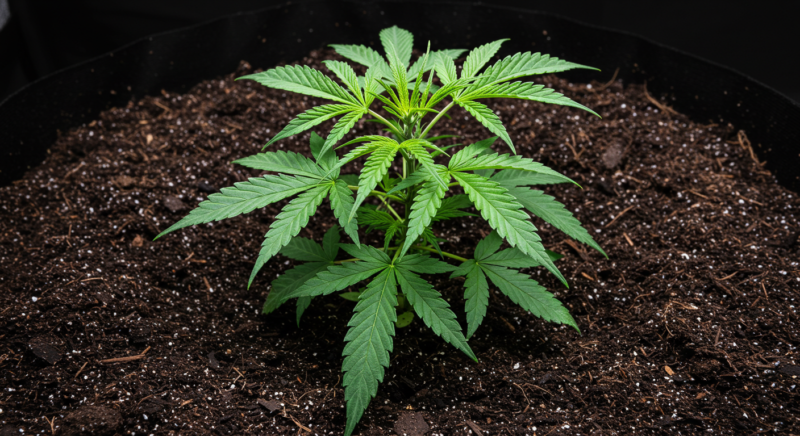
Lightweight and Moisture Retentive
Peat-based soil, commonly made from peat moss, is known for its light texture and excellent water retention. It’s a popular ingredient in many commercial potting soils and can be used on its own or as part of a soil mix. Peat moss is harvested from bogs, making it a highly absorbent material that retains moisture effectively, which is ideal for indoor cannabis cultivation or environments where consistent humidity levels are hard to maintain.
Peat-based soils are also frequently used for seedlings and clones because of their fine texture, which allows delicate roots to establish without being overwhelmed by heavy soil.
Advantages:
- Great Water Retention: Peat moss can absorb a large amount of water, making it suitable for dry climates or for growers who may struggle to maintain consistent watering.
- Lightweight: Peat-based soil is easy to handle and won’t compact too heavily, which is helpful in indoor grow setups where soil movement may be frequent.
- Ideal for Seedlings: Its light texture is gentle enough for young plants or clones, preventing root damage during early growth stages.
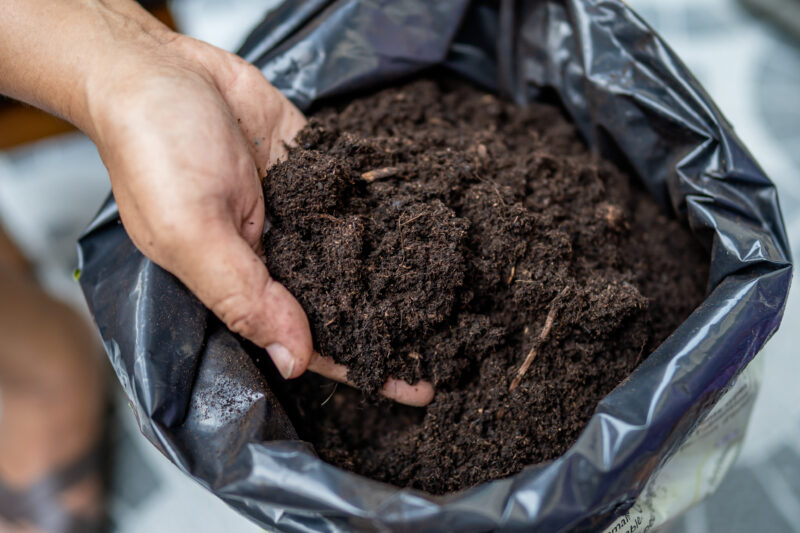
Disadvantages:
- Prone to Compaction: Peat moss can compact over time, especially if it’s not mixed with materials like perlite or vermiculite. This reduces aeration, which can suffocate roots.
- Acidic pH: Peat moss has a naturally acidic pH (around 3.5 to 4.5), which can lead to nutrient lockout if not properly adjusted. Lime is often added to balance the pH.
- Not Sustainable: Harvesting peat moss contributes to the depletion of natural peat bogs, which are important ecosystems. There are more sustainable alternatives like coco coir.
Loam
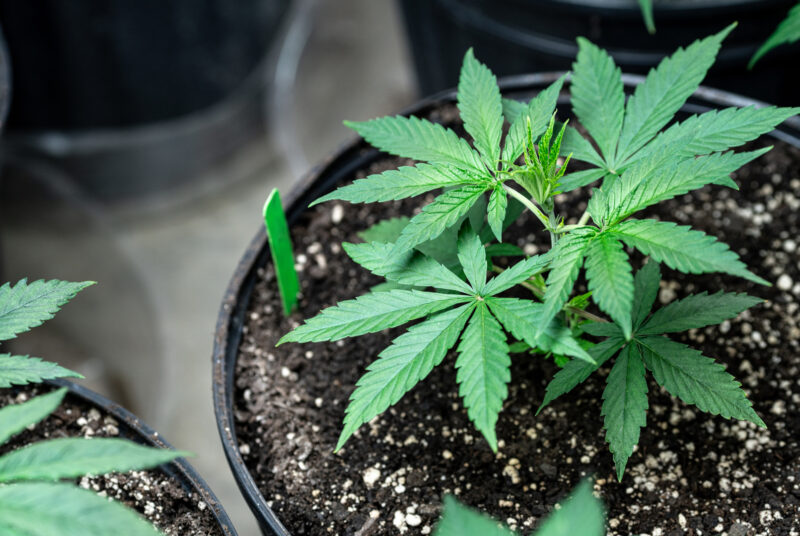
The Perfect Balance
Loam is often considered the gold standard for cannabis cultivation because it perfectly balances sand, silt, and clay. This composition provides an excellent combination of water retention, drainage, and aeration, making loam a highly fertile and versatile soil. It allows water to drain freely while still holding enough moisture to keep the roots hydrated and prevents the soil from becoming too dense or compacted.
Loam is also rich in nutrients and provides a steady supply of both macronutrients and micronutrients to cannabis plants. This makes it an ideal growing medium, especially for outdoor growers, as it supports vigorous root development and robust plant growth.
Advantages:
- Excellent Drainage and Aeration: Loam allows for proper water drainage while still retaining enough moisture for the plant’s roots, reducing the risk of root rot.
- Nutrient-Rich: The natural nutrient content of loam provides cannabis plants with a steady and reliable supply of essential nutrients, promoting healthy growth.
- Promotes Strong Root Development: The balanced texture of loam ensures that roots can expand freely without becoming compacted, which leads to stronger, healthier plants.
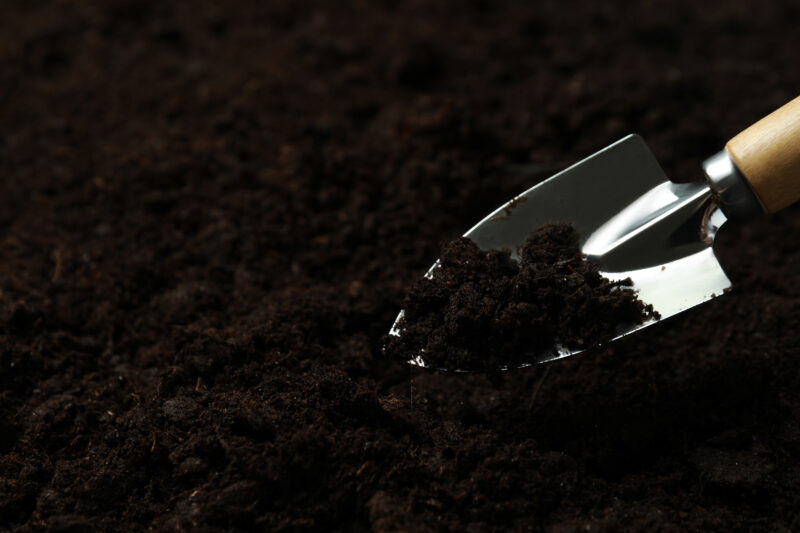
Disadvantages:
- Heavy and Expensive: High-quality loam can be expensive and more difficult to find than other soil types. It’s also heavier than alternatives like peat-based soils, which may be an issue for indoor growers who need to move plants frequently.
- May Need Custom Blending: If loam isn’t readily available, growers may need to mix it themselves, combining sandy soil, silt, and clay, along with organic matter to replicate its properties.
Amendments
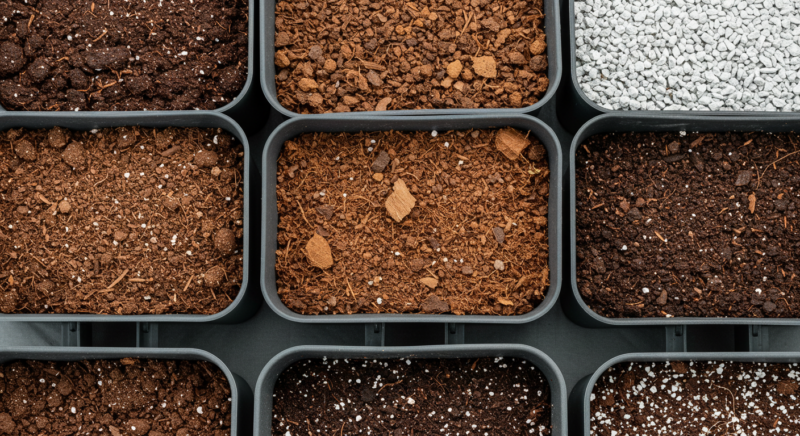
Soil amendments are an essential part of cannabis cultivation. They are materials added to soil to improve its physical properties, such as texture, drainage, nutrient content, and water retention. These amendments allow growers to create a more custom soil environment tailored to their specific plants and growing conditions. The right mix of amendments can drastically improve the health, growth, and yield of cannabis plants by ensuring that roots have optimal access to air, water, and nutrients. Below, we’ll dive deeper into some of the most commonly used amendments, exploring their benefits, risks, and best practices for use.
Coco Coir
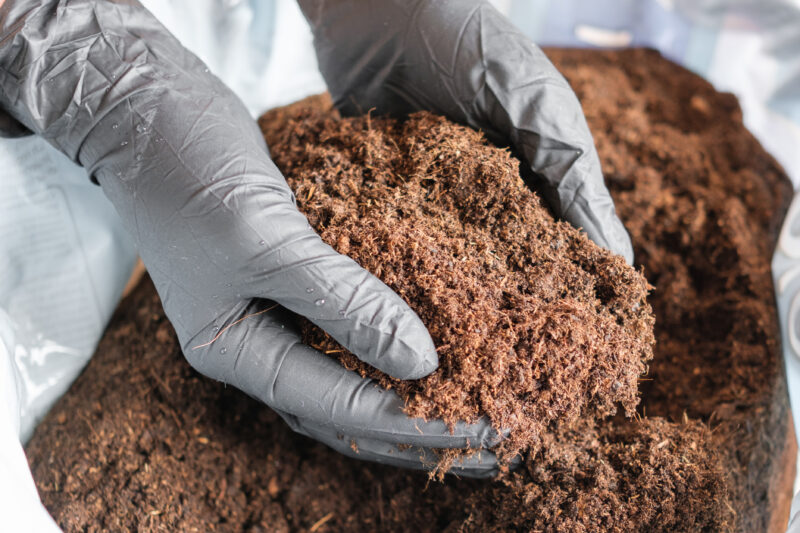
Sustainable and Versatile Amendment
Coco coir, made from the fibrous husks of coconuts, has become a popular soil amendment due to its excellent water retention and aeration properties. As a renewable resource, coco coir is more environmentally friendly than alternatives like peat moss, which is harvested from delicate ecosystems. When added to soil, coco coir improves moisture retention while maintaining a loose structure that prevents soil from compacting, allowing oxygen to reach the roots.
One of the major benefits of coco coir is that it is pH-neutral, simplifying nutrient management. However, because it is inert and lacks inherent nutrients, you will need to provide a full nutrient regimen for your plants. Coco coir also has a tendency to leach calcium and magnesium, which makes it essential to supplement with a Cal-Mag solution to avoid deficiencies. Despite this, coco coir is particularly useful for indoor cannabis cultivation or in environments where consistent moisture levels are a challenge to maintain.
Vermiculite
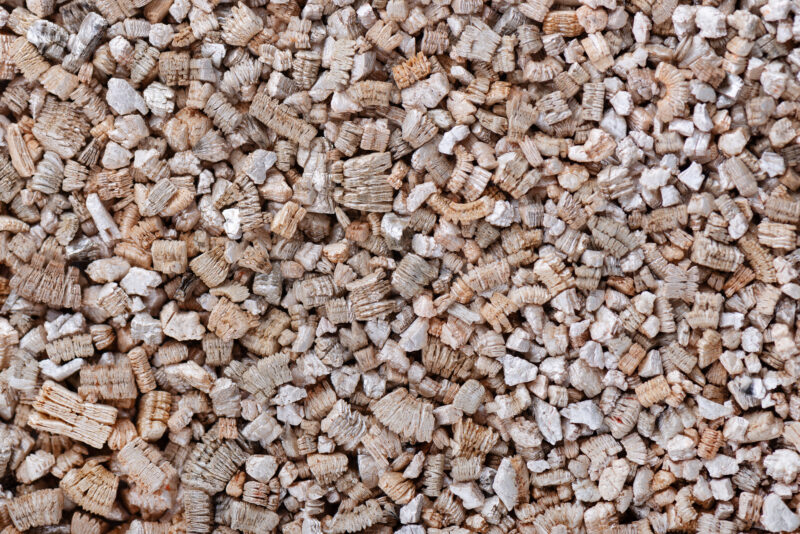
Boosting Water Retention and Nutrient Availability
Vermiculite is a mineral that expands when heated and is commonly used to improve water retention and nutrient buffering in soil. Vermiculite can hold large quantities of water and nutrients, making them more accessible to plants over time. This makes it a valuable amendment for cannabis growers in arid climates or for those who have difficulty maintaining consistent soil moisture. It helps to reduce the frequency of watering while also preventing nutrient leaching, which can wash away vital elements before plants can absorb them.
However, vermiculite’s ability to hold water can sometimes become a problem if overused, as it can lead to overwatering and root rot. It is best used in conjunction with other amendments like perlite, which improves drainage and balances moisture levels in the soil.
Perlite
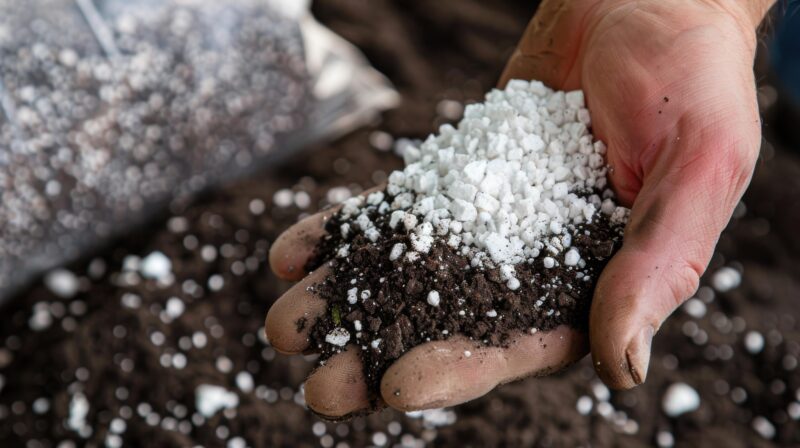
Maximizing Drainage and Aeration
Perlite is a volcanic glass that is heated until it expands into lightweight, porous granules. Its primary function as a soil amendment is to enhance drainage and aeration. Perlite’s porous structure creates air pockets in the soil, ensuring that oxygen can reach the roots and that excess water drains freely. This is crucial in cannabis cultivation, where too much water around the roots can lead to issues like root rot.
Perlite is especially useful when working with dense soils, like clay, or for indoor growers who need better control over their watering schedule. Because it is very lightweight, perlite can sometimes float to the surface of the soil or blow away in outdoor environments, so it may need to be replenished periodically. Despite this, perlite is an invaluable tool for preventing soil compaction and promoting healthy root development in cannabis plants.
Worm Castings
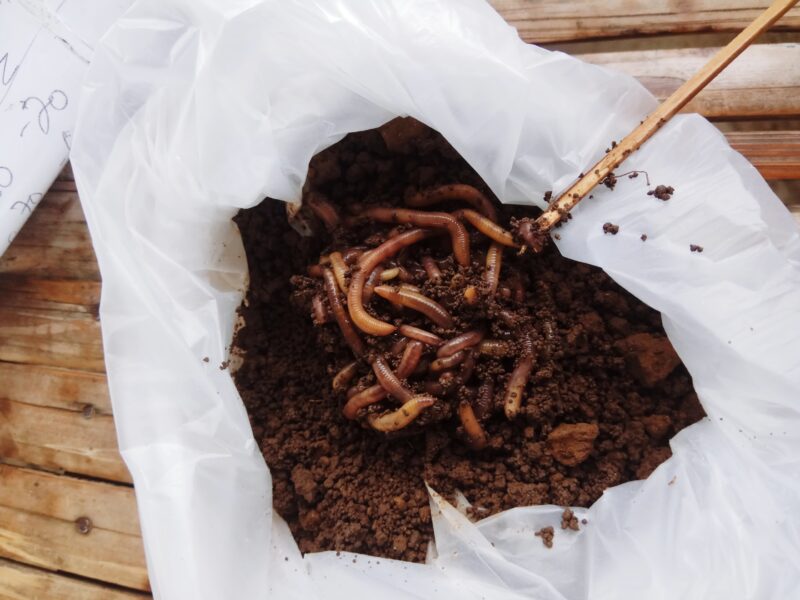
Natural Fertilizer and Soil Enhancer
Worm castings, also known as vermicompost, are an excellent source of micronutrients and organic matter that enrich the soil. Derived from worm excrement, they provide a slow-release source of nitrogen, phosphorus, and potassium, along with beneficial microbes that improve the soil’s structure and promote nutrient absorption. Unlike synthetic fertilizers, worm castings do not burn your plants, making them safe to use in higher quantities without worrying about nutrient overload.
In addition to providing nutrients, worm castings improve the soil’s water-holding capacity and aeration. This makes them ideal for creating a rich, living medium that supports robust root systems. Worm castings can be a foundational component of a soilless mix or a standard potting soil when mixed with other amendments like perlite and vermiculite.
Guano
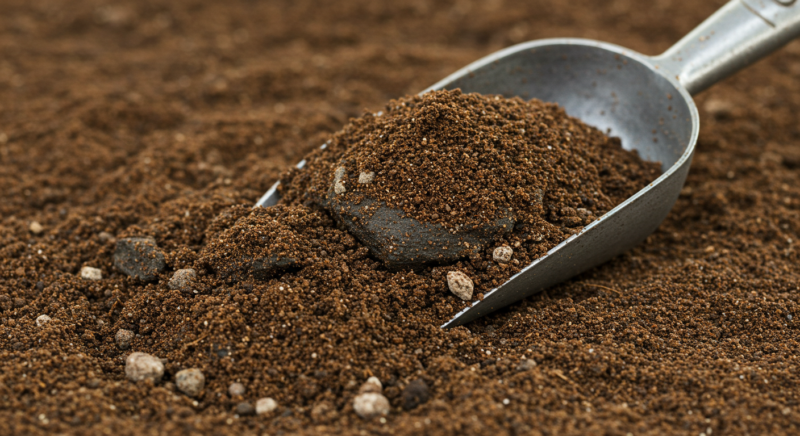
High-Powered Organic Fertilizer
Guano, or dried animal excrement, is another powerful organic amendment that can be either bat or bird-derived. It is available in formulations high in nitrogen, phosphorus, or as a balanced blend. Guano provides an excellent source of nutrients that promotes strong vegetative growth and healthy root systems, depending on its nitrogen or phosphorus content.
Guano is potent and can easily burn your plants if overused. When using guano, it’s important to use it sparingly and mix it well with other amendments to dilute its strength. It’s best used as a supplemental fertilizer rather than a primary soil component.
Bone Meal
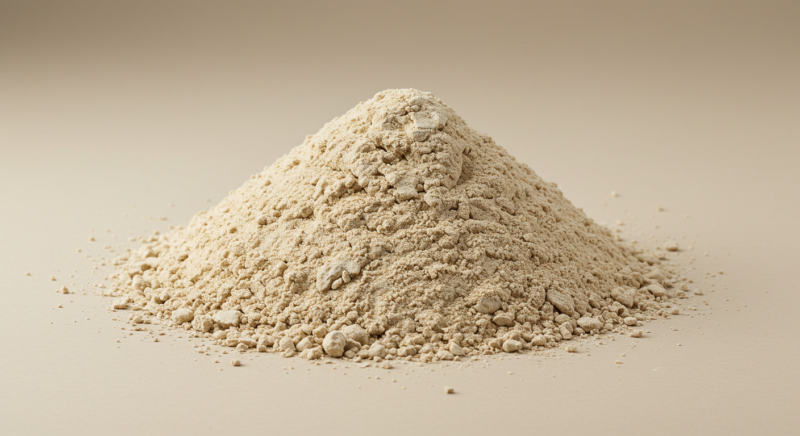
Natural Phosphorus Source
Bone meal is made from ground-up animal bones, typically from slaughterhouses. It is a great natural phosphorus source, essential for healthy root development and flower production in cannabis plants. It slowly releases phosphorus into the soil, providing long-term nutrition.
Bone meal is especially useful for promoting vigorous growth during the flowering stage, but it can pose challenges, particularly in outdoor grows. The smell of bone meal can attract animals, which may dig up your plants. It can also attract pets in indoor grows, so it should be applied carefully and possibly mixed into the soil to reduce odor exposure.
Blood Meal
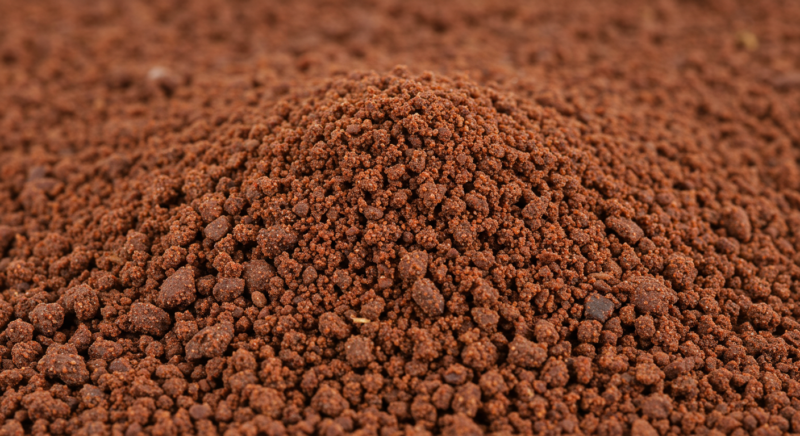
Nitrogen-Rich Organic Fertilizer
Blood meal is another byproduct from slaughterhouses, made from dried animal blood. It is a powerful nitrogen source, promoting lush, green vegetative growth in cannabis plants. Be careful when using blood meal, as it should be applied sparingly to avoid burning plants due to its high nutrient concentration.
Blood meal is also highly odoriferous and can attract animals if used outdoors. For this reason, many growers use it cautiously and mix it thoroughly into the soil to minimize odor and prevent wildlife from disturbing the grow site.
Kelp Meal
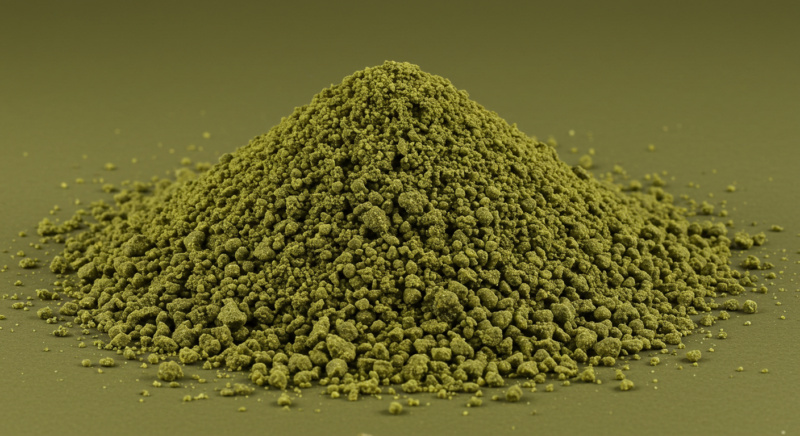
Natural Growth Promoter
The kelp meal is made from dried and ground seaweed, particularly the species Ascophyllum nodosum. This amendment is highly beneficial to cannabis plants because it contains growth hormones that promote the rapid development of both roots and foliage. Kelp meal is also rich in trace elements, enzymes, and other micronutrients that support overall plant health.
Kelp meal is often used as a supplement to boost plant growth during both the vegetative and flowering stages. It helps to strengthen the root system, increase stress tolerance, and improve the plant’s ability to absorb nutrients from the soil.
Dolomite Lime
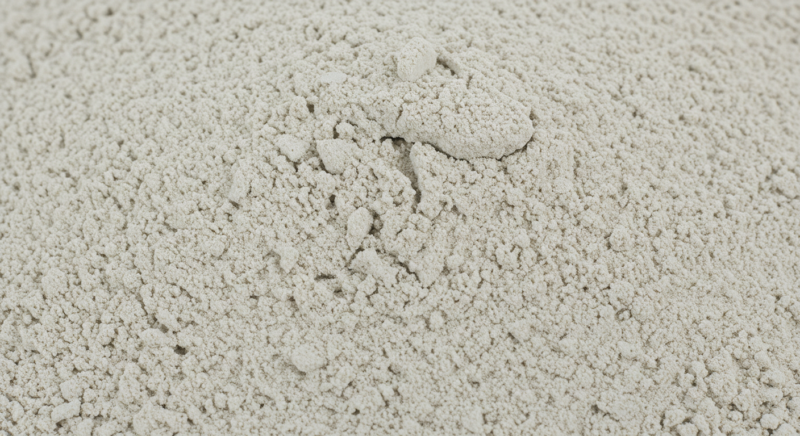
pH Buffer and Calcium Source
Dolomite lime is frequently added to soil to raise pH and offset the natural acidity found in many planting mediums, such as peat-based mixes. Cannabis plants thrive in a slightly acidic to neutral pH, ideally between 6.0 and 6.5, and dolomite lime helps maintain this balance by acting as a buffer.
In addition to balancing pH, dolomite lime provides calcium and magnesium, two essential nutrients for healthy plant growth. This amendment is slower-acting than other lime products, but its buffering capacity makes it a popular choice for maintaining a stable pH throughout the grow cycle.
Backyard Soil: Considerations and Potential Risks
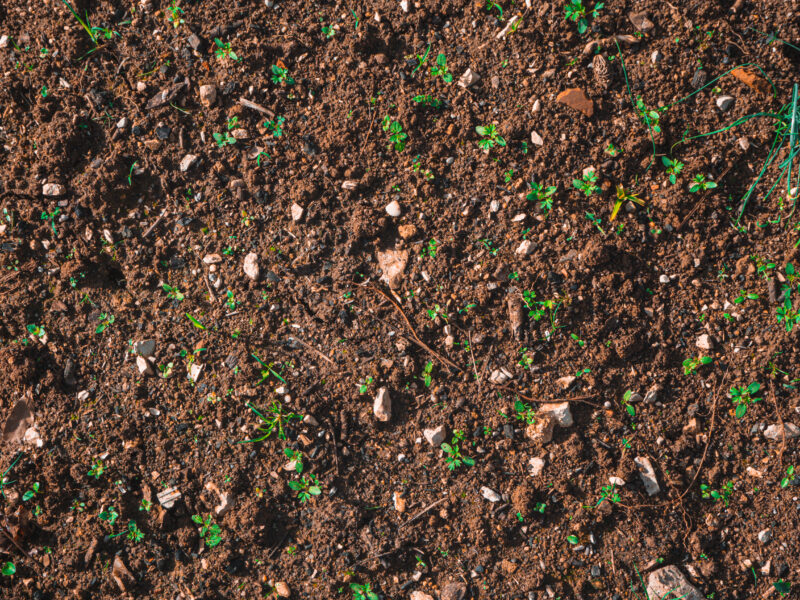
Using backyard soil for cannabis cultivation is an option, but it comes with notable risks that growers need to be aware of and address. Backyard soil often contains weed seeds, pathogens, pests, and fungal spores that can harm your cannabis plants, stunt their growth, or even lead to their death. These contaminants can introduce competition for nutrients, cause diseases, and create an unpredictable growing environment.
If you decide to use backyard soil, sterilization is a crucial step to eliminate these harmful organisms. A common method involves baking the soil in an oven at 392°F (200°C) until the core temperature reaches 140-212°F (60-100°C). This process effectively kills pathogens, weed seeds, and pests, ensuring a safer growing medium. However, it’s important to note that baking soil releases strong, unpleasant odors that can fill your kitchen. This method is only recommended if you have access to a spare or outdoor oven to avoid pungent smells inside your home.
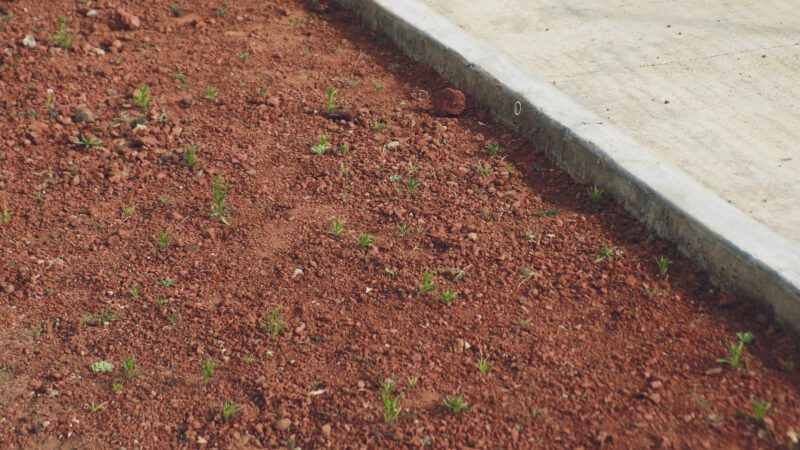
Despite the potential for using backyard soil, many growers choose to avoid the hassle and risks associated with sterilization and instead opt for commercial potting soils or soilless mixes. These products are professionally sterilized and free from contaminants, offering a clean, reliable growing medium that eliminates the guesswork and reduces the risk of pests and diseases. Commercial soils are also specifically formulated to meet the nutrient needs of cannabis, which further simplifies the cultivation process.
If you still prefer to use backyard soil, it is critical to amend it with beneficial additives such as perlite, vermiculite, worm castings, and compost. These amendments will improve the soil’s drainage, aeration, and nutrient content, creating a more balanced and hospitable environment for cannabis roots. Perlite and vermiculite enhance aeration and moisture retention, while worm castings and compost provide essential nutrients and beneficial microbes.
Reminder: Risks of Using Backyard Soil
- Contaminants: Backyard soil can contain weed seeds, pests, or pathogens that may infect or compete with your cannabis plants.
- Sterilization Needed: Without sterilizing the soil, you risk introducing diseases or pests, which can stifle plant growth or lead to poor harvests.
- Odor Issues: Sterilizing soil indoors creates strong odors, making it impractical for most home kitchens unless you have an outdoor or spare oven.
- Nutrient Deficiencies: Backyard soil may not have the proper nutrients for cannabis cultivation, requiring careful amendments to improve its quality.
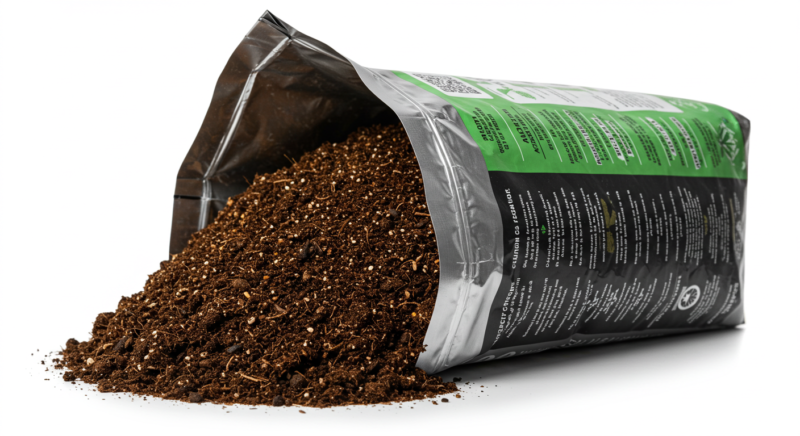
It is strongly recommended to invest in commercially produced soils or soilless mixes when growing cannabis. These products are specially formulated, sterilized, and designed to support the optimal growth of cannabis plants. Commercial soils are free from pests, weed seeds, and pathogens, ensuring that your plants start in a clean and balanced environment. They also contain the right mix of nutrients to support healthy growth from seedling to harvest, reducing the need for guesswork and amendments. By purchasing quality commercial soils, you significantly reduce the risks associated with backyard soil and give your cannabis plants the best chance to thrive.
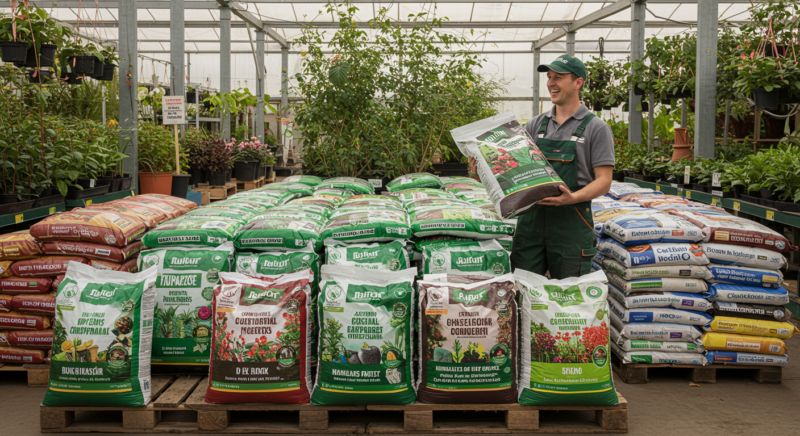
Commercial soils are the most reliable choice for growers who want successful and consistent results, making them well worth the investment. If you're unable to order soil online, visit to a local garden supply store is a great alternative. These stores often carry a wide selection of soil blends and substrates, many of which are well-suited for cannabis cultivation. You can compare textures, check ingredient labels, and even ask staff for recommendations based on your growing environment. Plus, you’ll get your supplies immediately without waiting for delivery.
Soil Temperature
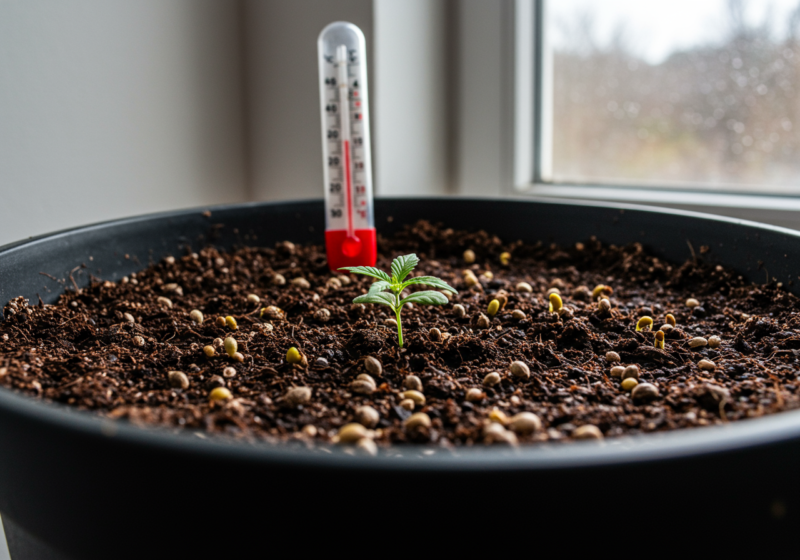
The Silent Factor in Healthy Roots
Proper soil temperature is another essential factor in promoting strong root growth. Ideally, your soil should be kept between 60-70°F (15.5-29°C). When the soil temperature rises above this range, it can trigger problems that are often difficult to fix later in the growing cycle.
Here’s what happens when your soil gets too hot:
- Fungal Growth: Warm, damp soil is an open invitation for fungi. Common soil-borne pathogens like Pythium or Fusarium can take hold, leading to root rot. Once root rot sets in, the plant’s ability to absorb water and nutrients is compromised, often leading to a slow and painful death.
- Insect Problems: Warm soil is also attractive to pests like fungus gnats, root aphids, and thrips, which feed on the delicate roots of your cannabis plant. These pests not only stunt growth but also introduce diseases and other complications.
- Rotting Roots: High temperatures can lead to excess moisture retention in the soil, which drowns the roots and leads to oxygen starvation. Roots that can’t access oxygen are essentially suffocating, and the plant will begin to show signs of stunted growth, yellowing leaves, and general poor health.
Maintaining the proper soil temperature is crucial to avoid these problems. If the soil is too hot, the environment becomes a breeding ground for all kinds of plant stressors, making it much harder to keep your plants healthy.
How to Maintain Proper Soil Conditions
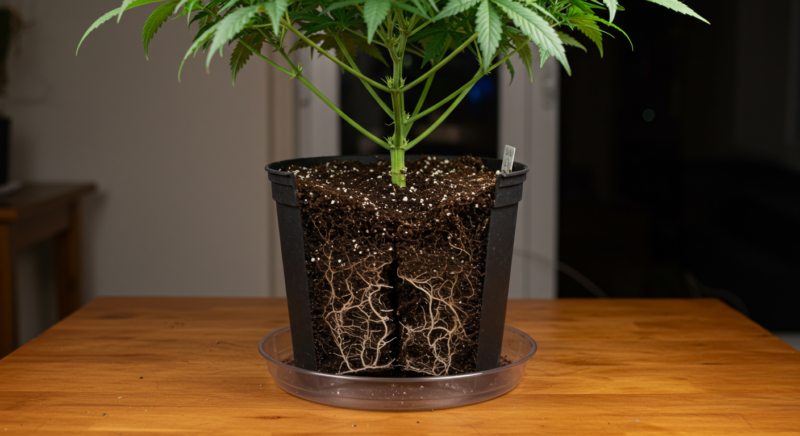
Here are a few tips for keeping your soil and roots healthy, no matter what stage of growth your plants are in:
Choose the Right Container Size: Stick to the ¾ gallon of soil per foot of plant growth rule. This ensures that the roots have enough space to expand and won’t become root-bound. Larger containers allow the soil to hold more water and nutrients, reducing the need for frequent watering.
Monitor Soil Temperature: Use a soil thermometer to keep an eye on the temperature in the root zone. Ideally, it should never exceed 70°F (29°C). If it does, consider using fans or increasing ventilation to keep the environment cooler. For outdoor grows, provide some shade during the hottest parts of the day.
Ensure Proper Drainage: Over-watering combined with warm soil is a recipe for disaster. Make sure your containers have proper drainage holes to prevent water from pooling at the bottom, which can lead to fungal problems and root rot. Good drainage is a must to keep the root zone aerated and oxygen-rich.
Select the Right Container: If you’re growing in hotter climates or using high-intensity lights indoors, consider using fabric pots or smart pots. These pots allow for better air circulation around the roots and help prevent heat buildup in the soil. Traditional plastic pots can trap heat, leading to temperature spikes that can harm the roots.
Supplement with Fertilizers: Even with the right amount of soil, your plants will need proper nutrients during their growing cycle. Make sure to use appropriate fertilizers—both organic or synthetic—depending on your growing method. Since soil already contains some nutrients, you’ll need to adjust your feeding schedule based on the soil’s quality and the plant’s needs.
Long Term Impact of Soil Health
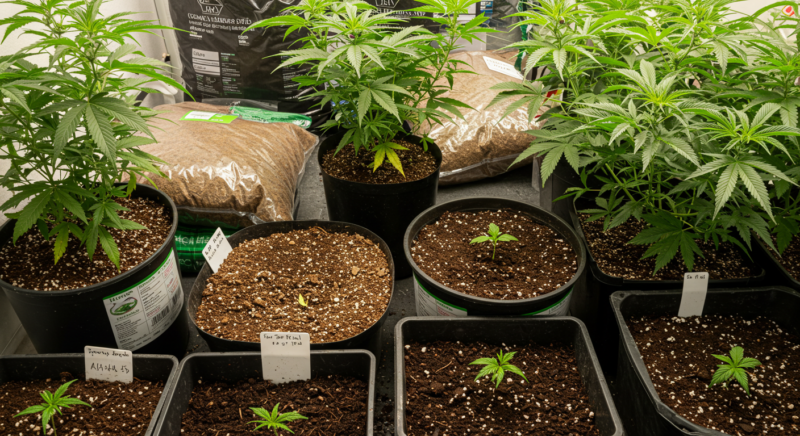
Cannabis roots thrive in an environment that provides balance—proper temperature, enough space, and sufficient nutrients. When your growing medium is properly sized, and the soil temperature is kept within the ideal range, your plants can develop a robust root system that can support vigorous growth and larger yields.
Neglecting these factors often leads to problems—once the roots suffer, the entire plant follows. Nutrient deficiencies, wilting, and even complete crop failure can occur when roots are trapped in a too-small container or suffocated by high heat and excess moisture.
Maintaining the right growing medium size and ensuring proper soil conditions aren’t just minor details—they’re fundamental aspects of cannabis cultivation. Attention to these critical factors will set your plants up for success, giving them the best chance to grow into healthy, high-yielding specimens.
Sizing Your Growing Medium
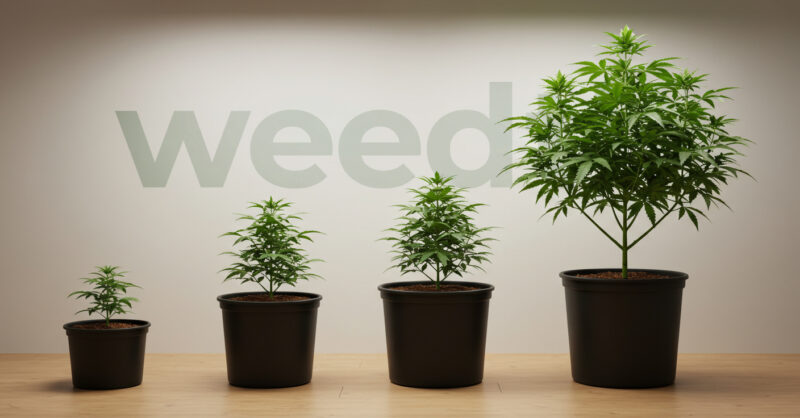
The size of the growing medium is a key factor often overlooked in cannabis cultivation. The amount of space your plant’s roots have to grow directly affects its ability to absorb nutrients, water, and oxygen. For each foot of cannabis growth, you’ll need around ¾ gallon of growing medium. This ratio gives your plants plenty of room for root expansion, ensuring they can support the full size of the plant during both the vegetative and flowering stages.
Here’s a breakdown:
- 2 ft. plant: Requires about 1 ½ gallons of growing medium.
- 5 ft. plant: Needs around 3 ½ gallons of growing medium.
- 10 ft. plant: Will require approximately 7 ½ gallons of growing medium.
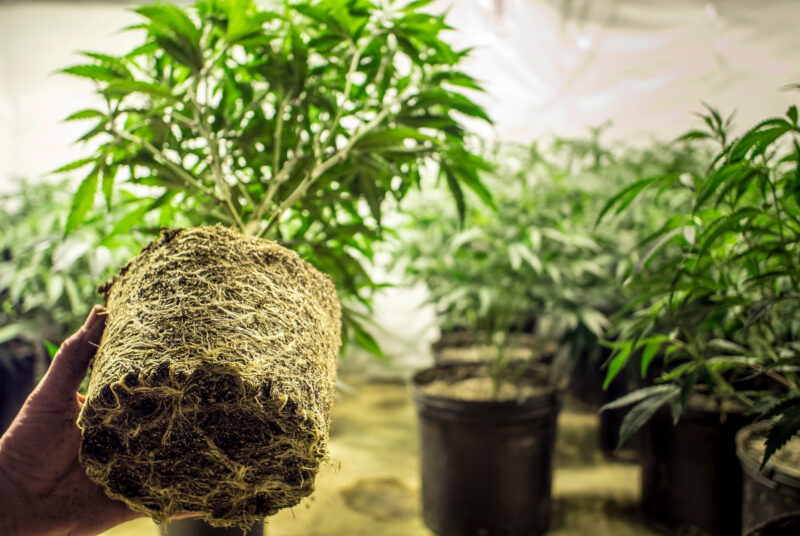
Using the right amount of soil is more than just making sure your plant has room to grow, it’s about preventing issues like root-binding, where the roots circle around themselves, restricting nutrient uptake and stunting plant growth. If the roots don’t have enough room to stretch out, the plant will suffer and no matter how much light, water or nutrients you provide.
Soilless Grow
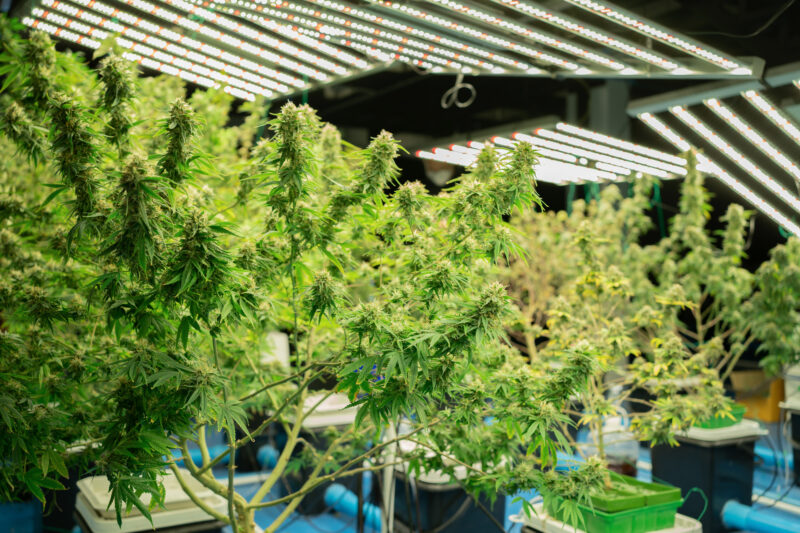
Detailed Grow to Cannabis
Soilless growing is popular among cannabis growers for its precise control over the plant’s environment. Unlike traditional soil-based grow, soilless growing relies on inert, sterile growing mediums that provide the physical structure for roots but do not contribute nutrients on their own. These mediums are specifically designed to improve water retention, aeration, and root health, while requiring the grower to supply all necessary nutrients through a carefully monitored feeding schedule using liquid or soluble fertilizers. This method allows for greater precision in managing the plant’s growth conditions, resulting in healthier plants, faster growth rates, and increased yields.
Traditional soil systems, nutrient availability can vary depending on the type and quality of soil. This can introduce inconsistencies in nutrient levels, water absorption, and even pH control. With soilless growing, the grower eliminates this variability, gaining complete control over what nutrients the plants receive, how much, and when. This gives cultivators the ability to create an ideal growing environment tailored to the cannabis plant’s exact needs at every stage of growth, from seedling to harvest.
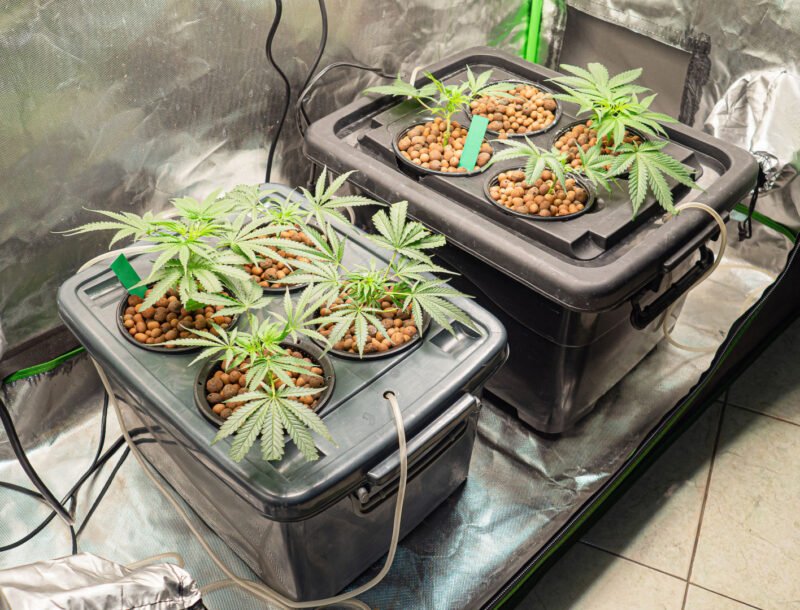
Soilless growing is particularly well-suited for indoor grow setups, where the growing environment (including light, temperature, and humidity) can be fine-tuned. When paired with a soilless medium, controlling every factor that affects plant health becomes a significant advantage, especially for growers looking to optimize growth speed and yield. Carefully managing the supply of water, nutrients, and oxygen, growers can consistently achieve stronger, healthier plants that produce larger, higher-quality buds.
What is a Soilless Medium?
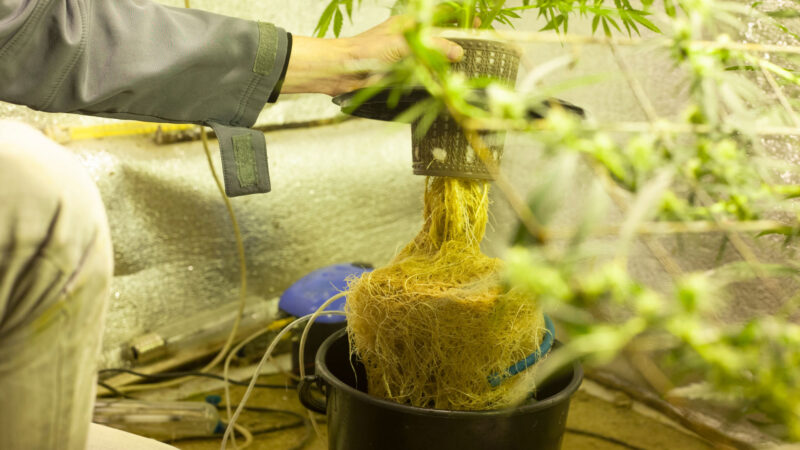
A soilless medium refers to any type of growing medium that doesn’t contain soil but still supports root structure. Rather than relying on soil to provide both structure and nutrients, cannabis plants are grown in inert substrates such as coco coir, perlite, vermiculite, rock wool, or peat moss. These mediums offer several advantages over traditional soil by providing an optimal environment for root growth, free from the pathogens or pests commonly found in soil. However, because soilless mediums don’t supply nutrients naturally, growers must take full responsibility for feeding the plants by providing a steady supply of water-soluble nutrients through the irrigation system.
One of the key benefits of using soilless mediums is the level of control it gives over the plant’s nutrient intake. Growers can tailor the nutrient mix based on the plant’s specific growth stage, ensuring that cannabis gets the right amount of nitrogen during the vegetative stage and higher levels of phosphorus and potassium during the flowering stage. This customized feeding schedule helps cannabis plants grow faster, develop stronger root systems, and produce bigger yields than plants grown in soil.
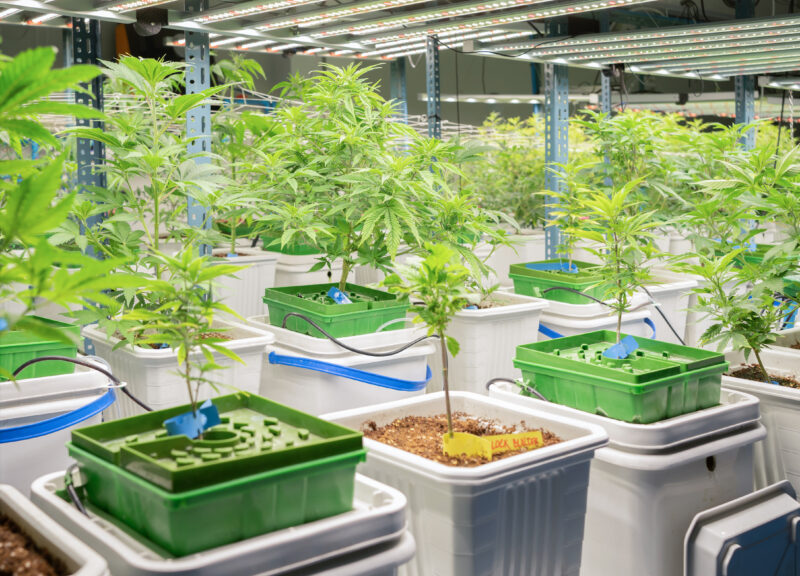
Soilless mediums also offer a high degree of flexibility when it comes to managing moisture and air balance. They generally provide better drainage and prevent the compaction issues that often occur in soil. Proper aeration and drainage makes the roots remain oxygenated, which is crucial for healthy root development. Promotes faster plant growth and improves nutrient absorption, giving the plants more consistent access to vital resources.
Advantages of Soilless Growing for Cannabis
- Precision Nutrient Control:
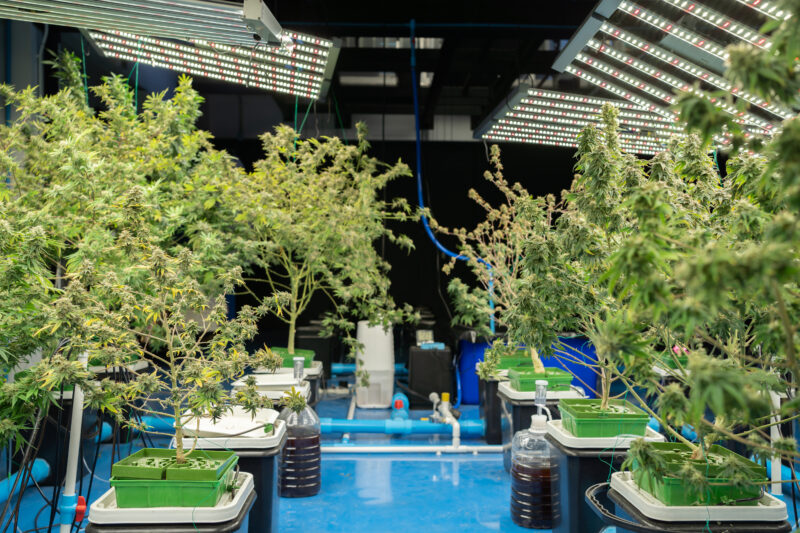
One of the most significant advantages of soilless growing is controlling nutrient intake. In traditional soil, nutrients are naturally present but can be inconsistent, leading to imbalances or nutrient lockout. Soilless mediums are inert, meaning they contain no nutrients on their own. This gives the grower full control over what, when, and how much the plant is fed. Cannabis plants require different nutrient profiles at various growth stages—high nitrogen levels during the vegetative stage, and higher phosphorus and potassium during the flowering stage—soilless growing allows cultivators to precisely adjust nutrient solutions to meet the plants’ needs at each phase. Because nutrients are delivered directly through irrigation or fertigation, the risk of over-fertilization or nutrient deficiencies is minimized as long as the grower is diligent with monitoring and adjusting nutrient levels. This level of precision is a key reason why soilless systems are preferred in commercial and large-scale cannabis operations, where consistent results are paramount.
- Enhanced Aeration and Drainage:

Cannabis plants thrive when their roots have access to both water and oxygen. Roots may struggle to receive enough oxygen in soil-based systems, especially in dense or compacted soil, leading to stunted growth or root rot. Soilless growing mediums, such as perlite, vermiculite, and coco coir, provide excellent aeration and drainage, ensuring that the roots remain well-oxygenated and that excess water drains away effectively. This minimizes the risk of waterlogging, a common issue that can suffocate roots and stunt plant development.
Soilless systems encourage faster root growth and more vigorous plant development by keeping the roots well-aerated and properly hydrated. Faster root development often translates to faster overall plant growth, as the plant can absorb water and nutrients more efficiently.
- Faster Growth and Increased Yields:
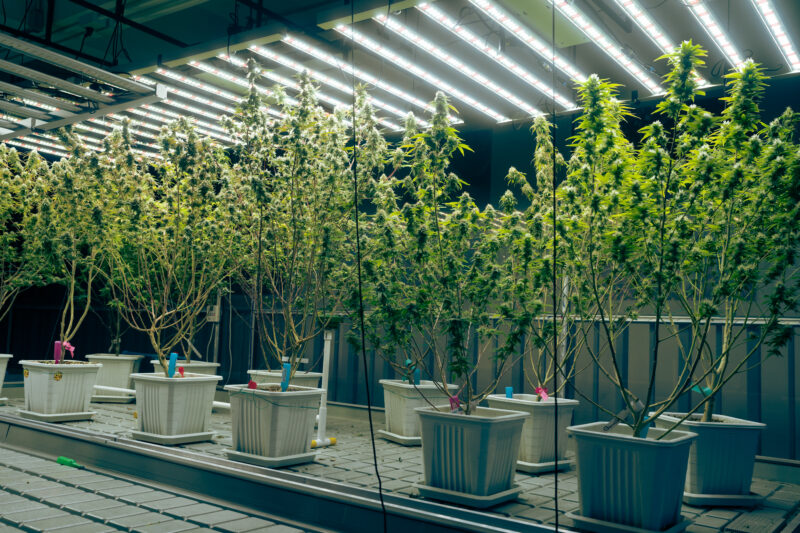
One of the main appeals of soilless growing for cannabis is the potential for accelerated growth and higher yields. Because the grower has complete control over nutrient intake and environmental factors, the plants can often grow faster than in traditional soil. Many growers report that cannabis grown in soilless mediums reaches maturity more quickly, meaning shorter grow cycles and the possibility of more harvests per year.
Increased root oxygenation and improved nutrient uptake in soilless systems lead to stronger, healthier plants that are more likely to produce larger, denser buds during the flowering phase. This ability to optimize every aspect of the growing environment—nutrients, water, oxygen, light, and temperature—makes soilless systems particularly appealing for growers aiming to maximize yield per square foot.
- Fewer Pests and Pathogens:
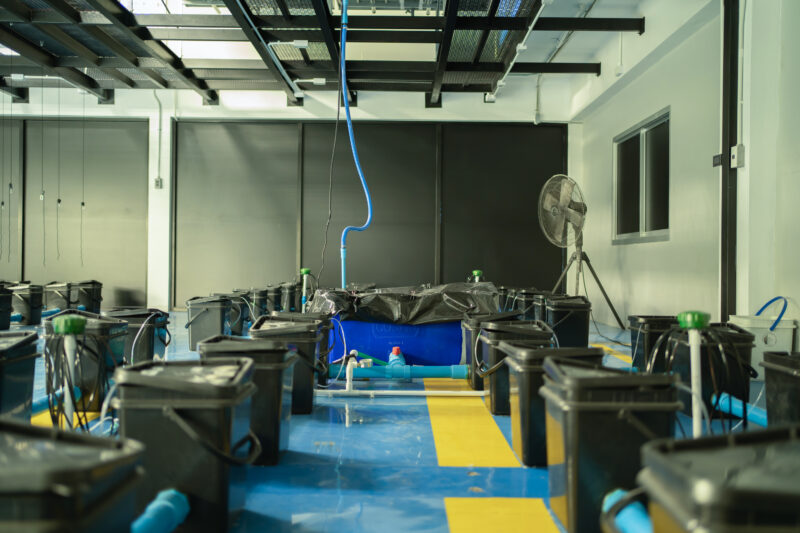
One of the biggest challenges of soil-based growing is the potential for pests, pathogens, and weed seeds to be present in the soil. Soilless mediums are sterile and inert, meaning they do not harbor these contaminants. This drastically reduces the risk of common pests like fungus gnats, root aphids, and soil-borne diseases that can damage or kill your plants. The cleanliness of soilless growing mediums makes them particularly appealing for indoor growers, where maintaining a pest-free environment is crucial.
Additionally, the reduced presence of pathogens in soilless mediums means that plants are less likely to suffer from diseases like root rot or powdery mildew often exacerbated by poor drainage or compacted soil. By removing these risk factors, soilless growing offers a cleaner, more controlled environment for cannabis cultivation.
- Ideal for Indoor Cultivation:
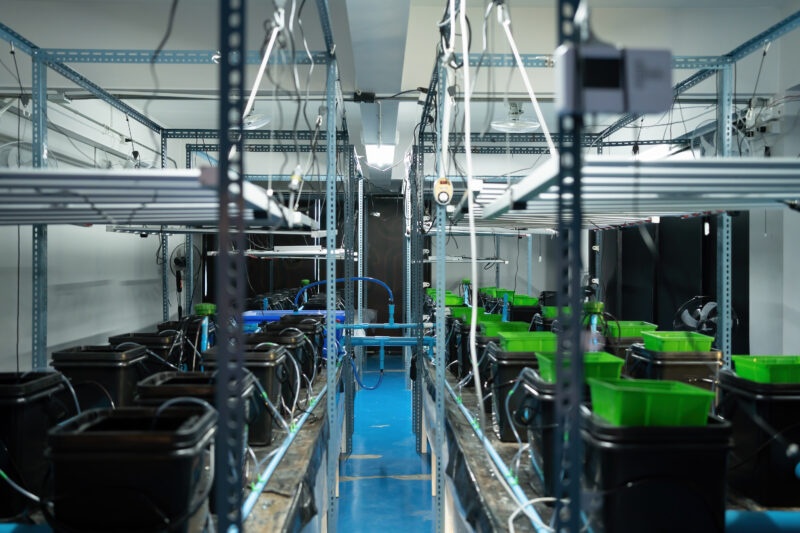
Soilless growing mediums are lightweight and easy to manage, making them an ideal choice for indoor grow setups. They are often easier to transport, mix, and move around than traditional soil, especially when growing in pots or containers. Soilless systems also pair well with indoor grow techniques like grow tents or climate-controlled rooms, where the grower has full control over environmental factors like temperature, humidity, and light.
Because soilless mediums like coco coir, perlite, and vermiculite are excellent at retaining moisture while allowing proper aeration, they support healthy root systems in confined spaces, such as indoor containers or hydroponic setups. The faster growth rates and increased oxygenation in soilless mediums further enhance the effectiveness of indoor growing, making it easier to scale up or down depending on the space available.
Challenges and Considerations in Soilless Growing
While soilless growing offers numerous benefits, there are also some challenges that growers must consider.
- Nutrient and pH Management:
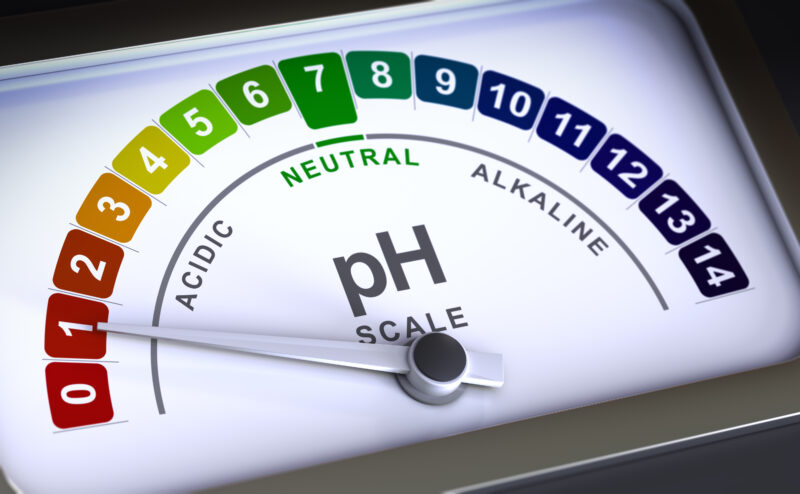
Since soilless mediums contain no nutrients, the grower is responsible for providing the plant with everything it needs through liquid fertilizers or soluble nutrients. This requires a careful balancing act to ensure that the plant receives the right amount of nutrients without overfeeding, which can lead to nutrient burn or underfeeding, which causes deficiencies.
Additionally, growers must closely monitor the pH of the nutrient solution and the growing medium. Cannabis plants thrive in a slightly acidic pH range of 5.8 to 6.5, and if the pH drifts too far outside this range, nutrient uptake will be compromised. This is where tools like pH meters and EC (electrical conductivity) meters become invaluable in soilless growing, as they help growers monitor nutrient levels and pH balance to ensure optimal growing conditions.
- More Frequent Watering:
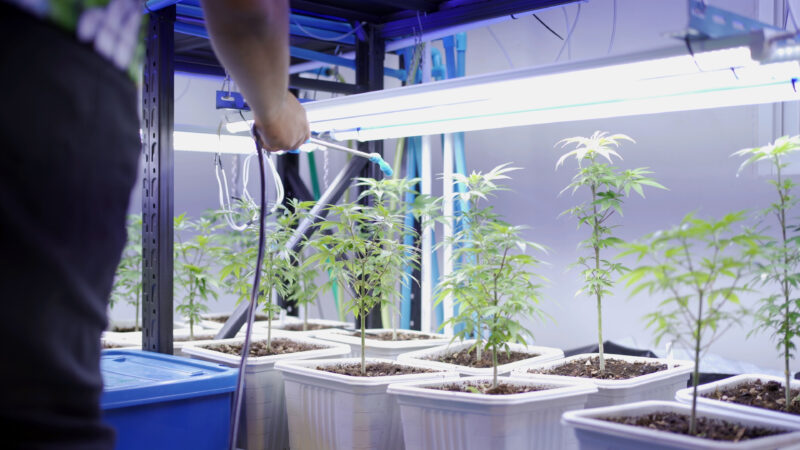
Soilless mediums tend to dry out more quickly than traditional soil because they hold less moisture. While this is beneficial for preventing overwatering, it also means that plants will require more frequent watering to avoid stress from dehydration. For growers using automated watering systems, this can be easily managed, but for manual watering setups, missing a watering can cause the plants to dry out rapidly, particularly during the peak growing stages when cannabis plants consume more water.
Growers need to be vigilant about maintaining moisture levels in soilless systems to prevent the medium from becoming too dry, which can stunt growth and reduce yields.
- Higher Initial Setup Costs:
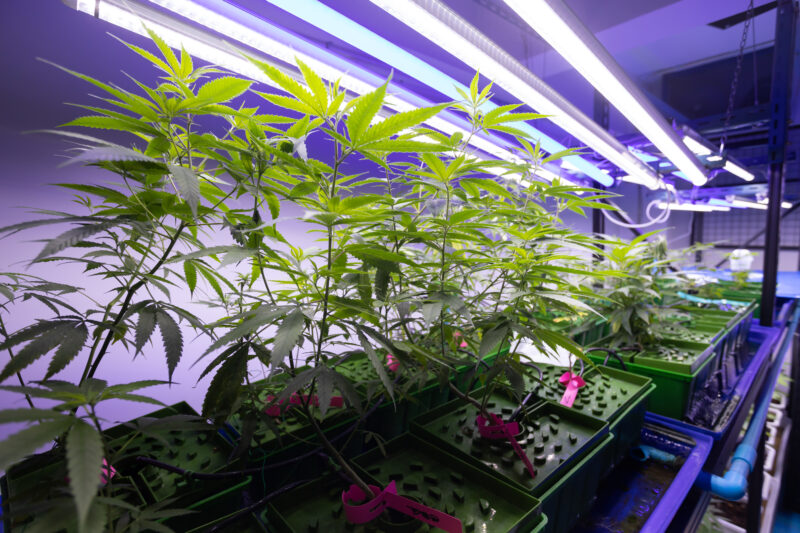
While soilless growing can lead to higher yields and faster growth, the initial setup costs are typically higher than with traditional soil-based systems. Purchasing high-quality soilless mediums like coco coir, perlite, or peat moss, along with the necessary fertilizers and monitoring equipment such as pH meters and EC meters, can add to the upfront expenses. However, many growers find that the increased control, cleaner environment, and potential for higher yields outweigh these initial costs in the long run.
Types of Soilless Mediums
When growing cannabis in a soilless system, the medium you choose plays a pivotal role in determining the health, growth rate, and yield of your plants. Soilless mediums are designed to provide optimal water retention, aeration, and drainage while offering no inherent nutrients. This setup allows the grower to have complete control over nutrient delivery through a customized feeding schedule. By understanding the properties of different soilless mediums, you can tailor your growing environment to meet the specific needs of your cannabis plants, ensuring they get the right balance of nutrients, water, and oxygen for optimal growth.
Below is an expanded look at the most commonly used soilless mediums, each with its own benefits and challenges.
Coco Coir
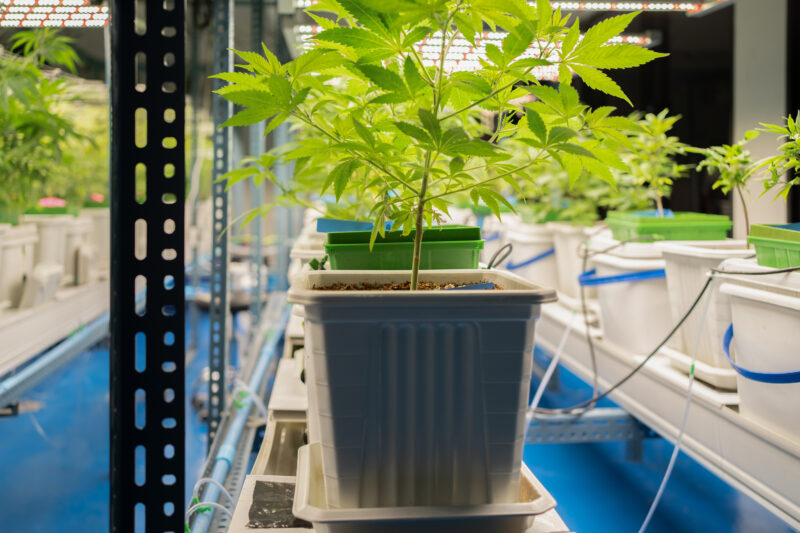
Coco coir has become one of the most popular soilless mediums for cannabis cultivation due to its sustainability and versatility. Derived from the fibrous husks of coconuts, coco coir is a renewable resource, making it an environmentally friendly alternative to peat moss, which is harvested from delicate bog ecosystems. Coco coir offers an ideal balance of water retention and aeration, which creates a perfect environment for cannabis root growth.
Coco coir’s fibrous texture holds onto moisture efficiently, ensuring the roots remain hydrated without becoming waterlogged. This property is particularly beneficial for indoor growers who need to maintain consistent moisture levels in their plants’ root zone. Despite its water retention capabilities, coco coir remains light and well-aerated, allowing oxygen to circulate through the medium and reach the roots. This prevents issues like root rot, a common problem in dense, compacted soils that suffocate the roots.
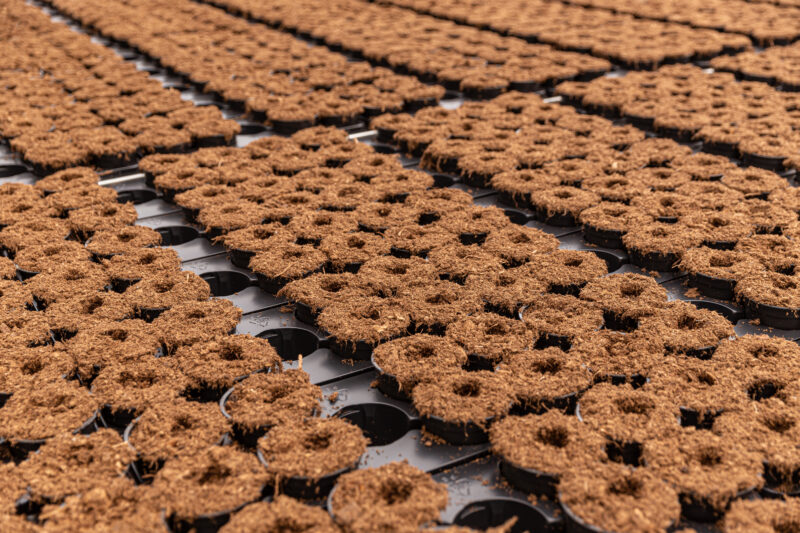
Coco coir is an inert medium, meaning it contains no inherent nutrients. As a result, growers must provide a full nutrient regimen throughout the plant’s lifecycle. It’s also important to note that coco coir tends to leach calcium and magnesium, so it is crucial to supplement these nutrients to avoid deficiencies. Many growers use Cal-Mag supplements alongside their standard nutrient mix to ensure their plants receive all the necessary minerals.
Coco coir is pH-neutral typically ranging from 5.5 to 6.5 making it easy to maintain a balanced pH in the root zone. This is essential for cannabis, as it helps prevent nutrient lockout, ensuring the plants can absorb nutrients efficiently.
Benefits:
- Coco coir retains water well while allowing good drainage, preventing waterlogging.
- It is renewable and eco-friendly, making it a sustainable choice.
- The loose, fibrous structure promotes healthy root development through good aeration.
- pH-neutral, reducing the risk of nutrient lockout.
- Can be reused multiple times after sterilization.
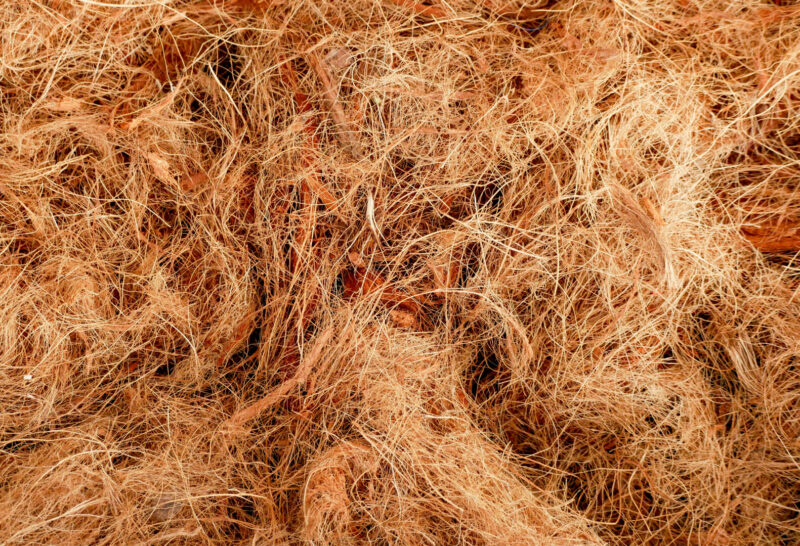
Challenges:
- Requires calcium and magnesium supplementation due to its tendency to leach these nutrients.
- Needs a complete nutrient regimen, as it contains no inherent nutrients.
- Initial setup costs can be higher if you need to buy coco-specific nutrients.
Pebbles
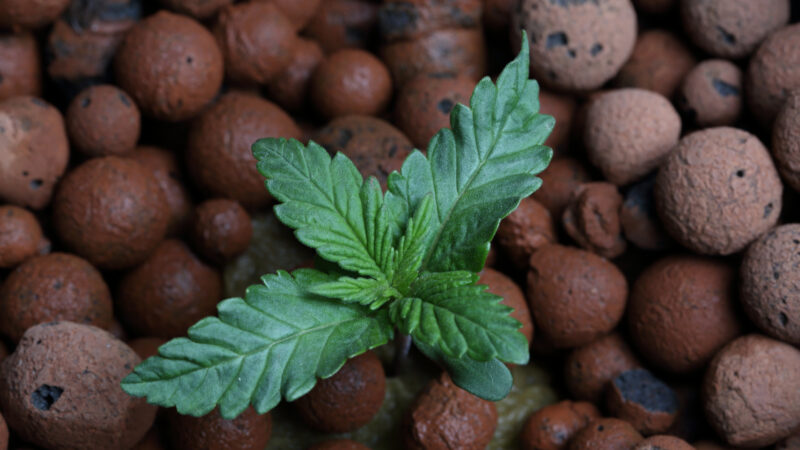
Pebbles are small, rounded stones commonly used in container gardening to improve drainage and create space between the growing medium and the bottom of the pot. In cannabis cultivation, pebbles are often placed as a drainage layer at the bottom of the container rather than being mixed into the growing medium itself. This helps prevent soil from compacting directly around the drainage holes and allows excess water to escape freely, reducing the risk of waterlogging and root rot.
Although pebbles are not a growing medium on their own, they play a critical supporting role in maintaining a healthy root environment—especially in containers without optimal drainage. Their presence at the base of the pot helps create a buffer zone that keeps the root zone from sitting in stagnant water. This is particularly helpful for growers using plastic or ceramic containers, which can retain excess moisture if not properly drained.
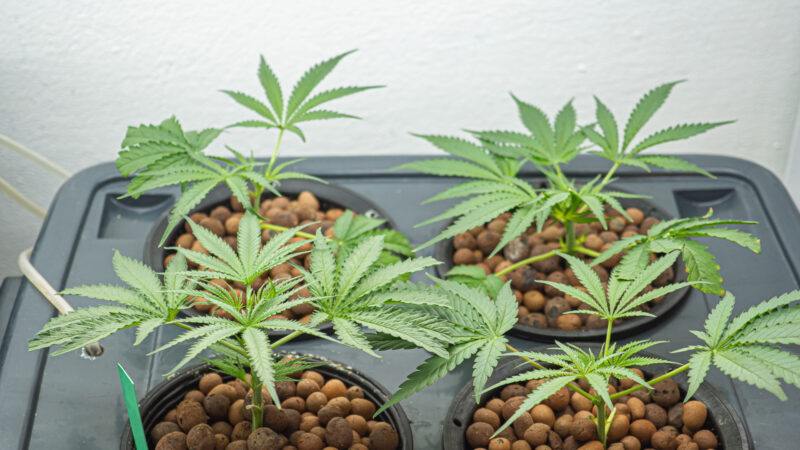
Unlike materials like perlite or coco coir, pebbles do not absorb or retain water. They are inert, meaning they don’t interact with nutrients or alter pH levels. Because of this, they’re a low-maintenance and long-lasting option for improving the physical structure of a container setup.
However, not all pebbles are ideal for use in cannabis cultivation. Stones collected from gardens or outdoor environments may carry pests, pathogens, or mold spores that can contaminate the growing space. It’s highly recommended to use horticulture-grade pebbles or thoroughly clean and sterilize any natural stones before using them indoors.
Pebbles are also heavier than most soilless materials, which can be beneficial in stabilizing pots and helping prevent tall plants from tipping over. Their weight can serve as a counterbalance in lightweight grow setups where added stability is needed.
Benefits:
-
Helps improve drainage by preventing soil from blocking drainage holes.
-
Creates a stable base that reduces the risk of overwatering and root rot.
-
Inert and long-lasting, with no impact on nutrient balance or pH.
-
Provides added weight to stabilize lightweight containers.
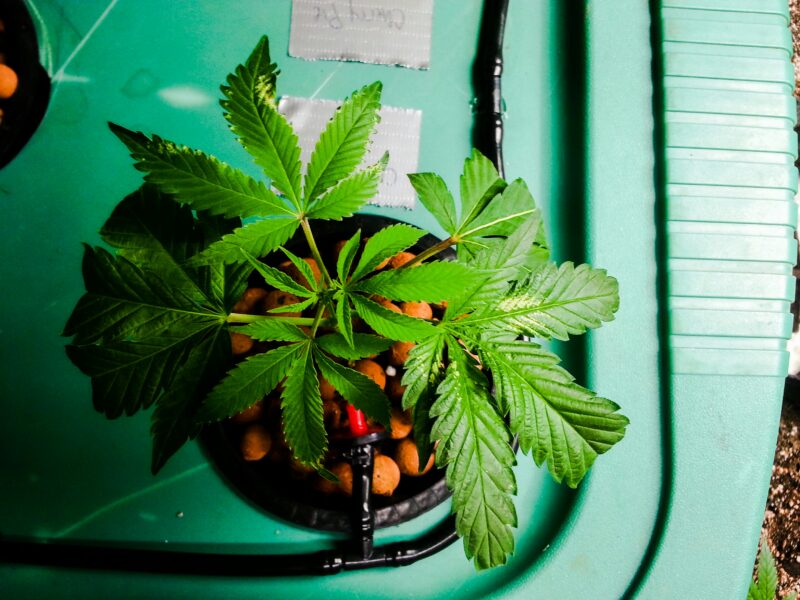
Challenges:
-
Does not retain moisture or provide aeration like other soilless mediums.
-
Must be cleaned thoroughly if sourced from outdoors to avoid contamination.
-
Adds weight to containers, which may be inconvenient in mobile grow setups.
-
Not suitable as a standalone growing medium; intended only as a drainage layer.
Perlite
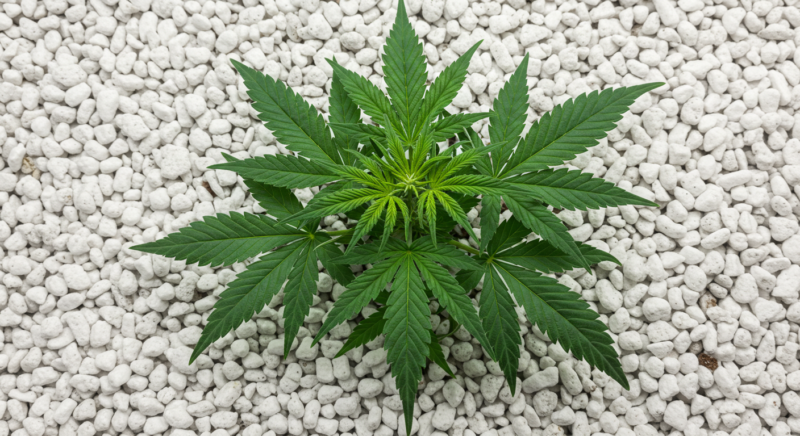
Perlite is a volcanic glass that is expanded through heating to form lightweight, porous granules. It is commonly used in soilless mixes to improve aeration and drainage. Its primary role in cannabis grow is creating air pockets in the growing medium, ensuring the roots receive plenty of oxygen. This prevents root suffocation, which can lead to slow growth and poor nutrient absorption.
Perlite is almost always used as an amendment in combination with other soilless mediums like coco coir, peat moss, or vermiculite. It balances out more water-retentive mediums by ensuring that excess moisture can drain away easily. This makes it particularly useful in preventing waterlogging and root rot, which are common problems in dense growing mediums that retain too much water. In soilless systems, healthy root oxygenation translates directly to stronger plant development and faster growth.
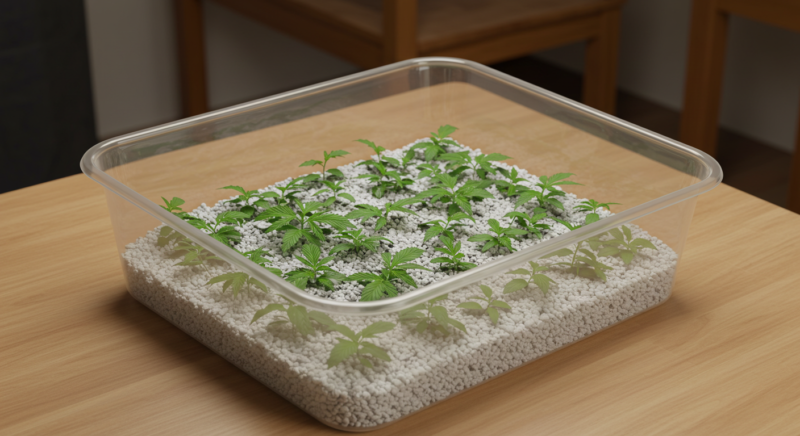
One of the reasons perlite is so effective in cannabis cultivation is its porous structure, which allows for exceptional airflow around the root zone. This helps to promote faster root growth and makes nutrients more readily available to the plant. While perlite doesn’t retain water itself, this feature is often seen as a benefit, especially in well-draining mixes that ensure plants don’t sit in water.
Although perlite is widely used and beneficial, it is also very lightweight, which can cause it to float to the surface of the medium after watering. This can result in some displacement over time, especially if the plants are grown outdoors, where wind and rain can move the perlite out of place. Because of this, growers may need to replenish perlite periodically or mix it thoroughly with other mediums to minimize surface displacement.
Benefits:
- Perlite greatly improves aeration, keeping roots well-oxygenated.
- It prevents compaction in growing mediums, ensuring proper drainage.
- Inert and pH-neutral, making it compatible with most nutrient regimens.
- Ideal for use in both indoor and outdoor growing systems.
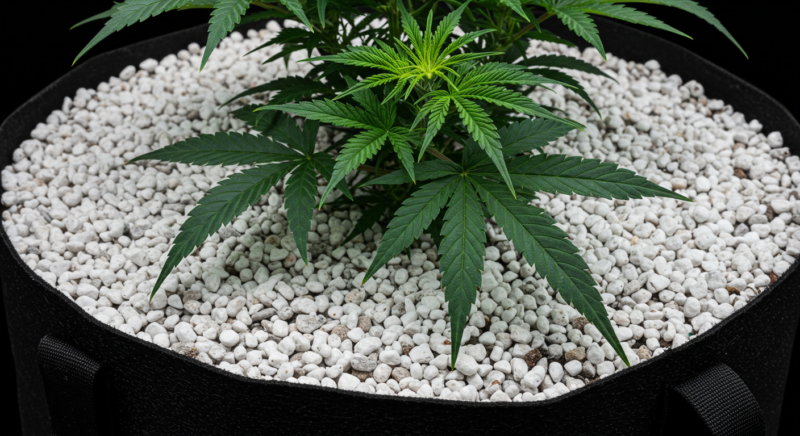
Challenges:
- Does not retain water, so it must be combined with a water-retentive medium.
- Lightweight and prone to floating, requiring periodic replenishment.
- No inherent nutrients, so nutrient delivery must come entirely from fertilizers.
Vermiculite
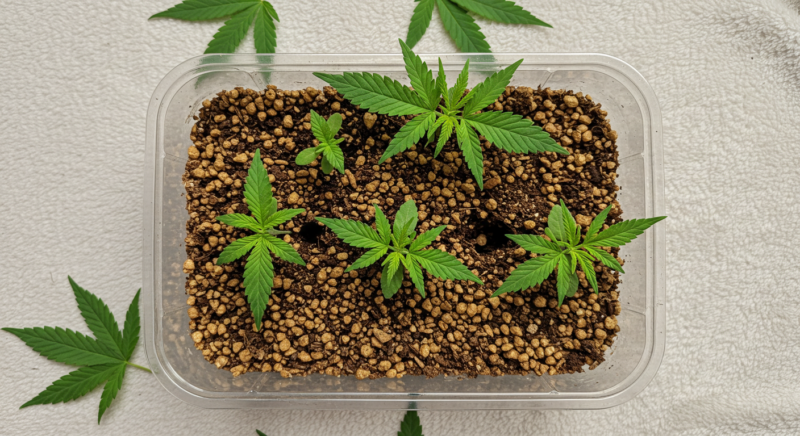
Vermiculite is another natural mineral that expands when heated, creating a lightweight and absorbent material. Unlike perlite used primarily for aeration and drainage, vermiculite’s strength lies in its ability to retain water and nutrients. This makes it particularly valuable for growers in dry climates or for those who struggle to maintain consistent soil moisture levels.
When added to a soilless mix, vermiculite looks like a sponge, absorbing large amounts of water and keeping it readily available for the plant’s roots. This feature is useful in environments where plants may need a buffer against drought or in systems where growers prefer to water less frequently. Vermiculite also holds onto nutrients, making them available to the roots over a longer period of time. This can be particularly helpful during the flowering stage, where nutrient uptake is critical for bud development.
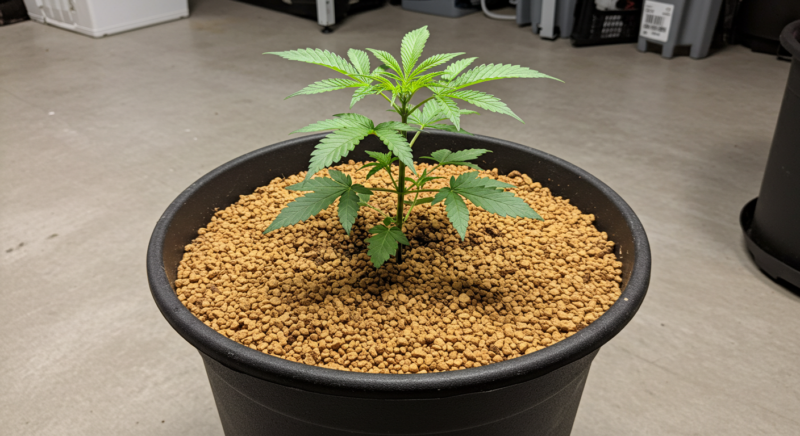
While vermiculite’s water-retaining properties are beneficial in some contexts, it can also pose risks if not managed properly. In high-humidity environments or for growers prone to overwatering, vermiculite can hold too much moisture, leading to root rot or other water-related issues. For this reason, it is often paired with a well-draining medium like perlite to balance out its water retention properties.
Benefits:
- Excellent at retaining water and keeping roots hydrated.
- Holds onto nutrients, providing a slow-release effect.
- Ideal for dry climates or growers who want to reduce watering frequency.
- Lightweight and easy to mix into other mediums.

Challenges:
- Can lead to overwatering and root rot if not used with a well-draining medium.
- Needs careful monitoring of moisture levels to avoid waterlogging.
- Doesn’t provide aeration on its own, requiring perlite or another aerating medium.
Peat Moss
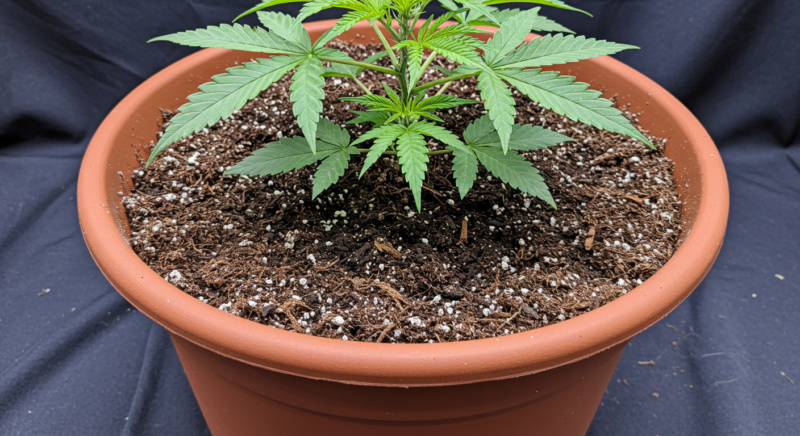
Peat moss has been a long-standing favorite in horticulture and cannabis cultivation due to its excellent water retention capacity. It is harvested from bogs and is commonly used as a base in potting mixes. Peat moss is prized for its ability to hold water, making it ideal for growers who need a medium that can sustain moisture for extended periods.
Peat moss has a soft, spongy texture, allowing roots to spread freely and access water without being restricted by compacted soil. However, one major drawback is that peat moss is naturally acidic, with a pH range between 3.5 and 4.5, which is too low for cannabis plants. To correct this, growers usually mix dolomite lime into the peat moss to raise the pH to a more suitable range for cannabis (5.8 to 6.5).
While peat moss provides great moisture retention, it is not a sustainable resource. Its extraction from sensitive bog ecosystems can cause significant environmental damage, and many growers are looking for more sustainable alternatives like coco coir. Additionally, peat moss lacks nutrients, so you’ll need to add a nutrient mix tailored for cannabis throughout the growing cycle.
Benefits:
- Excellent water retention, making it suitable for moisture-sensitive plants.
- Soft, fibrous texture promotes root growth and allows for easy root expansion.
- Works well in combination with other mediums like perlite to improve drainage.
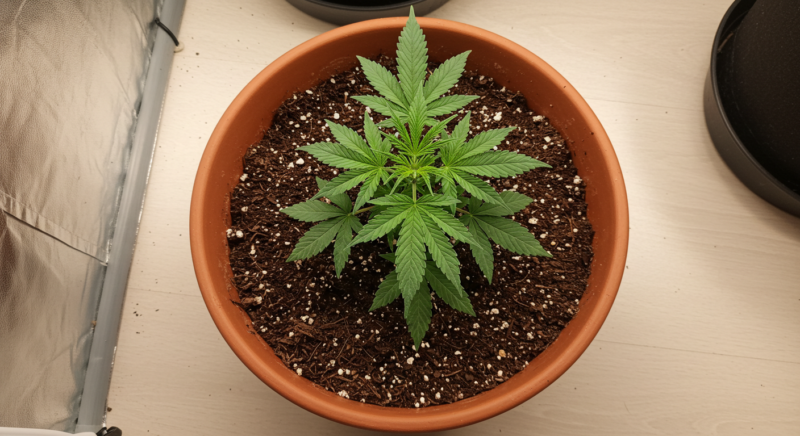
Challenges:
- Naturally acidic, requiring pH adjustment with lime for cannabis cultivation.
- Not sustainable due to environmental concerns over harvesting peat bogs.
- Lacks nutrients, so requires supplementation through a feeding regimen.
Rockwool

The Hydroponic Grower's Favorite
Rockwool is an artificial medium created by melting volcanic rock and spinning it into fibers, similar to cotton candy. It is highly popular in hydroponic and soilless cultivation systems because of its sterile nature, ability to retain water, and excellent aeration properties. Rockwool is often used in hydroponic drip systems or as starter cubes for seedlings and clones, providing a clean and controlled environment for root growth.
Rockwool is extremely effective at holding water while allowing excess moisture to drain away, reducing the risk of overwatering. Its lightweight, fibrous structure ensures that roots remain well-aerated, preventing root rot and promoting fast, healthy growth. Because of its sterile nature, Rockwool is free from pests, pathogens, and weed seeds, making it ideal for clean, controlled environments where maintaining optimal plant health is a priority.
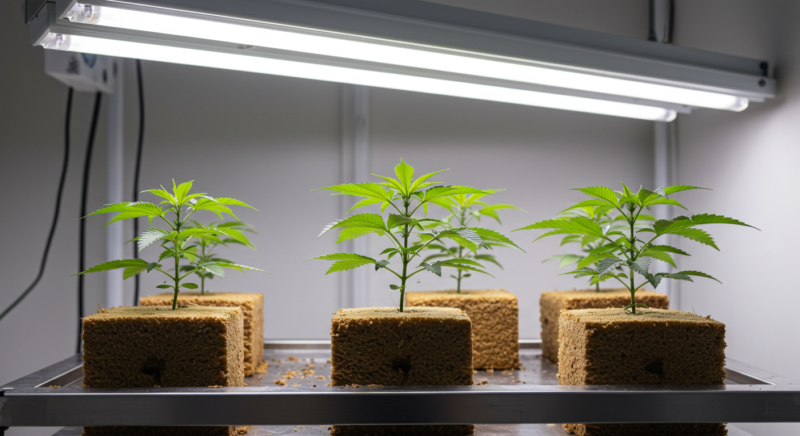
Rockwool can be challenging for beginners because it retains a lot of water, which can lead to overwatering if not managed properly. Additionally, Rockwool is non-biodegradable, which raises concerns about its environmental impact. Disposing of used Rockwool can be problematic, as it does not break down naturally and can contribute to landfill waste.
Benefits:
- Excellent water retention and aeration.
- Sterile medium, reducing the risk of pests and pathogens.
- Ideal for use in hydroponic and drip irrigation systems.
- Provides a stable, consistent environment for seedlings and clones.
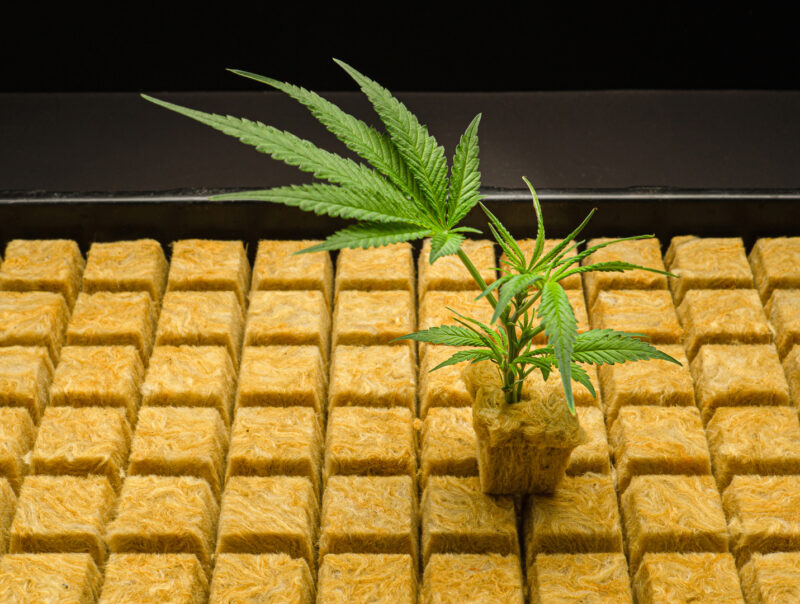
Challenges:
- Can retain too much water, leading to overwatering if not managed properly.
- Non-biodegradable, raising environmental concerns regarding disposal.
- Requires careful monitoring of nutrient delivery and pH levels.
Soilless Mixes
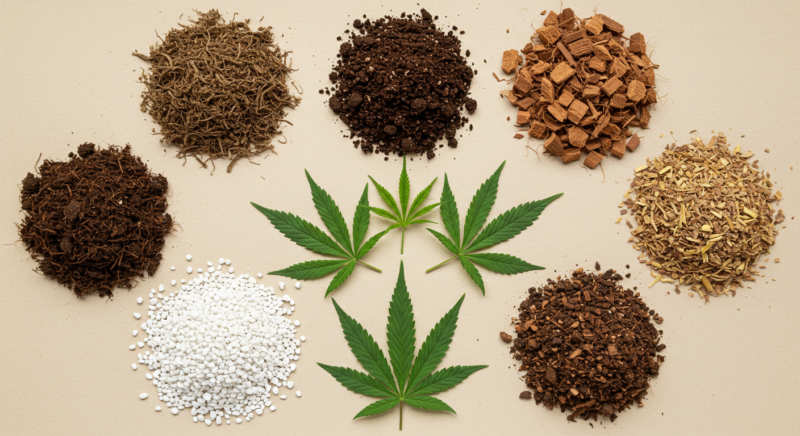
Soilless mixes are becoming a popular choice for cannabis growers because they offer a high level of control over the growing environment compared to traditional soil. These mixes are composed of components like peat moss, perlite, vermiculite, coco coir, and worm castings, providing the ideal conditions for root development, nutrient uptake, and water retention. The primary advantage of using soilless mixes is the ability to tailor the medium to the specific needs of cannabis plants at different stages of growth or under different environmental conditions. Because these mixes are inherently inert, meaning they contain little or no nutrients, growers must supplement the plants with a feeding regimen throughout their life cycle. This allows for precise control over what the plants receive, but it also means that nutrient delivery and pH levels must be closely monitored to ensure healthy growth. Soilless mediums tend to retain less moisture than traditional soil, so they require more frequent watering, particularly during periods of rapid growth.
The flexibility and control offered by soilless mixes come with the added benefit of superior drainage and aeration. These properties help prevent issues like root rot, which is common in overwatered or compacted soil. Well-aerated roots are more effective at absorbing nutrients, which leads to faster growth rates and higher yields in cannabis plants.
Custom Soilless Mixes
Creating a custom soilless mix allows growers to optimize the medium for specific growing conditions, whether for indoor, outdoor, or greenhouse setups. Each component in a soilless mix serves a different function, and by adjusting the ratios, growers can address challenges like moisture retention, nutrient availability, and root aeration.
Here are five effective soilless mix examples for cannabis grow, each designed to advantages based on environmental factors or grow stages:
- 50% Perlite / 50% Vermiculite:

This is a simple yet highly effective mix for cannabis cultivation, especially for those who prioritize excellent drainage and aeration. Perlite provides superior airflow, ensuring that oxygen reaches the roots easily, while vermiculite retains moisture and nutrients, keeping them available for the plants. This mix is perfect for fast-growing strains that require aerobic root environments to thrive. Since it drains so well, it helps prevent root rot and overwatering issues. However, because this mix doesn’t retain moisture for long periods, it requires frequent watering and nutrient feeding.
- 40% Worm Castings / 30% Perlite / 30% Vermiculite:

This blend offers an excellent balance of nutrient retention and aeration. Worm castings serve as a natural fertilizer, providing micronutrients and beneficial microbes that promote plant health and soil biodiversity. Perlite and vermiculite ensure proper drainage while still retaining enough moisture to keep roots hydrated. This mix is ideal for growers who want to boost nutrient availability in a natural way, without relying heavily on synthetic fertilizers. The added microbial life from the worm castings also helps improve root health and nutrient absorption.
- 50% Coco Coir / 30% Perlite / 20% Vermiculite:
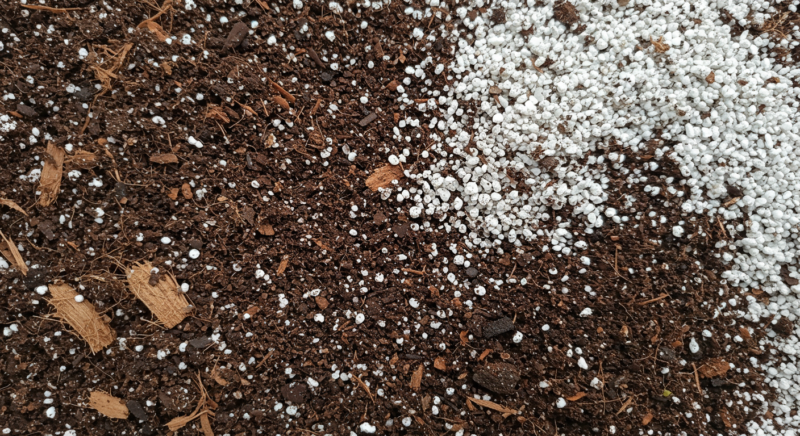
Coco coir is a favorite among cannabis growers because it provides excellent moisture retention while allowing for proper aeration. In this mix, coco coir serves as the primary medium, holding moisture and creating a stable root environment, while perlite increases drainage, and vermiculite balances the mix by retaining some water and nutrients. This combination works especially well for indoor grows, where consistent watering schedules can be maintained. Coco coir’s fibrous structure ensures that the roots are oxygenated while preventing compaction, and the added perlite and vermiculite help ensure the mix drains well to avoid waterlogging.
- 60% Peat Moss / 20% Perlite / 20% Vermiculite:
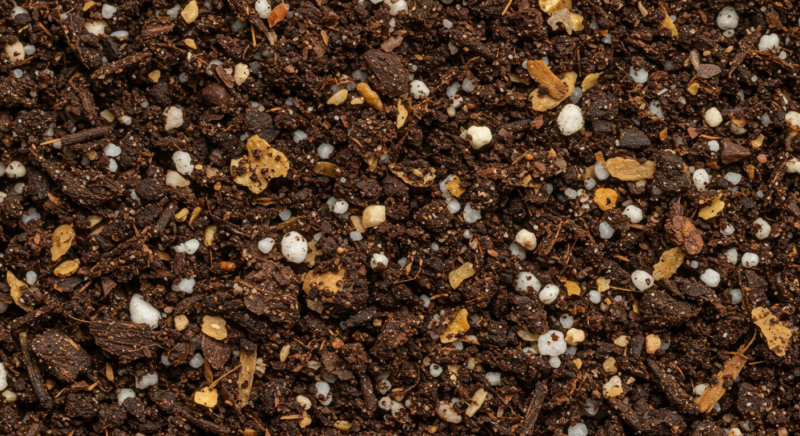
This blend is designed for growers who need a medium with high moisture retention. Peat moss is excellent for holding water, which makes this mix ideal for dry environments or for growers who might not be able to water their plants frequently. The perlite and vermiculite components work together to ensure that the mix does not become too dense or compacted, allowing water to flow through while keeping the root zone aerated. One thing to keep in mind is that peat moss is naturally acidic, so pH adjustments may be necessary. This can be achieved by adding dolomite lime to balance the pH to a range that is suitable for cannabis.
- 40% Coco Coir / 40% Perlite / 20% Worm Castings:
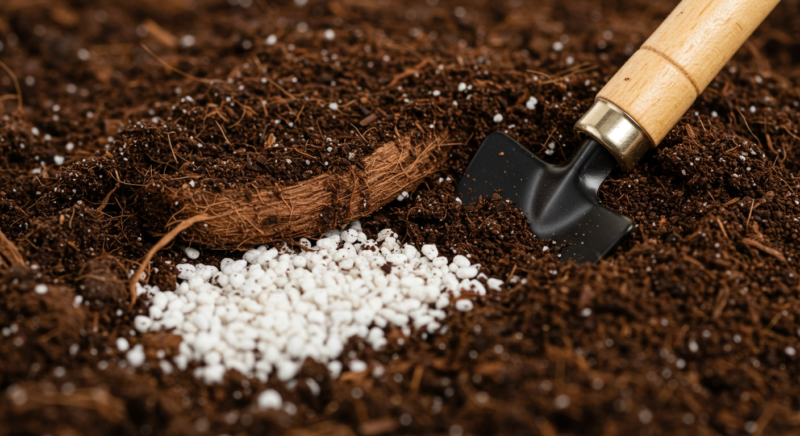
This is a well-rounded, nutrient-rich mix that combines the best attributes of coco coir, perlite, and worm castings. The coco coir and perlite work together to provide superior water retention and drainage, while worm castings offer a natural source of nitrogen and micronutrients. This mix supports strong root development, ensures proper airflow around the roots, and delivers nutrients that promote healthy plant growth throughout the entire life cycle. It’s an excellent option for growers who want to reduce the need for frequent fertilization while still providing their plants with a balanced, nutrient-dense medium.
Indoor Containers
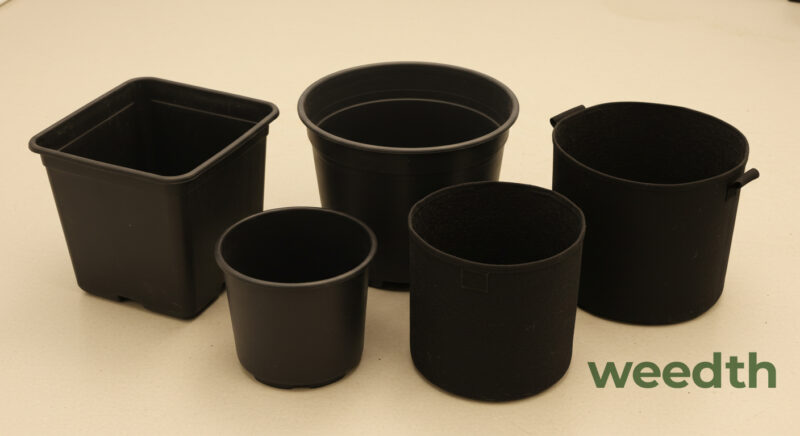
Choosing the right container is one of the most important decisions you’ll make when growing cannabis indoors. The container isn’t just a vessel to hold your soil, it directly affects how well your plants’ roots develop, how much air and nutrients they can access, and ultimately how healthy and productive your plants will be. With all the options out there, it’s crucial to understand what each type of container offers so you can pick the one that’s best for your grow setup.
Let’s break down some of the most common containers used in indoor cannabis cultivation and discuss how they’ll impact your grow.
Traditional Plastic Pots
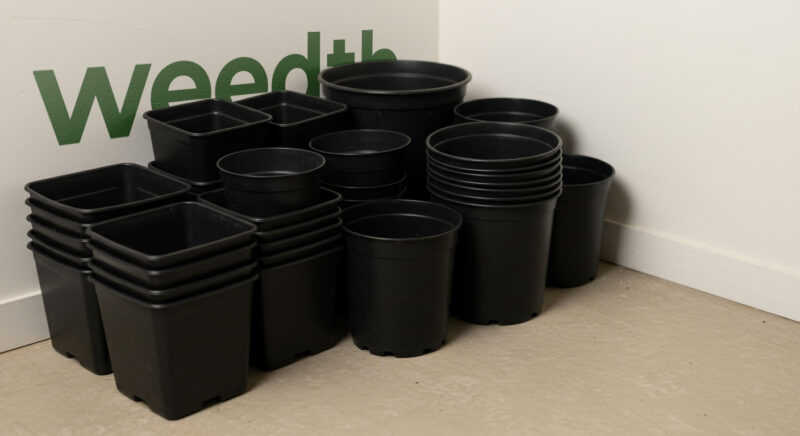
Growers’ Classic Choice
You’ve definitely seen these before. They’re everywhere from garden centers to indoor grow rooms. Plastic pots are a favorite among growers for one simple reason: they get the job done, and they don’t cost a lot. These pots come in every size imaginable, from tiny seedling starters to massive containers for flowering plants.
Plastic pots are lightweight, easy to move around, and durable enough to last for multiple grow cycles if you take care of them. They hold moisture well, which is great if you don’t have time to water every day. Another advantage is that plastic pots are readily available and inexpensive, making them a go-to for beginners or growers with a lot of plants to manage.
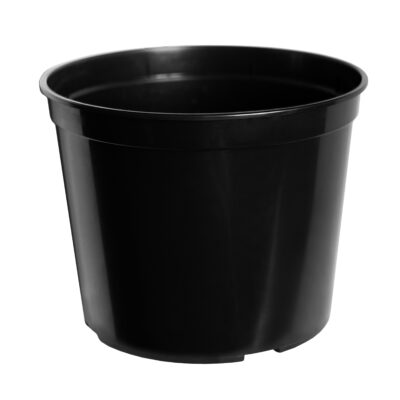
Plastic pots do have their downsides. They’re not breathable, meaning your roots won’t get much air. This lack of aeration can lead to overwatering issues if you’re not careful, causing root rot, which is a grower’s worst enemy. Also, because the roots aren’t pruned by air, they can start to circle around the pot and become root-bound if left in one container for too long. To avoid these issues, make sure you have plenty of drainage holes, and keep an eye on how your plants are growing.
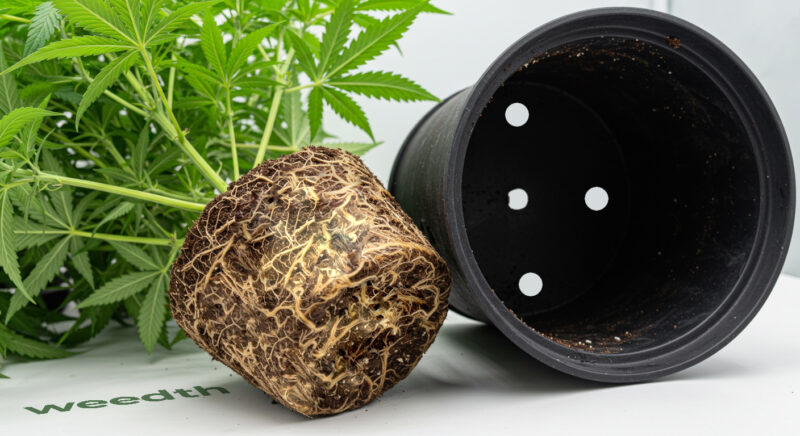
Plastic pots are perfect for growers just starting out or anyone who needs a basic, reliable option that won’t break the bank. Just make sure you’re managing drainage, and you’re good to go.
Fabric Pots
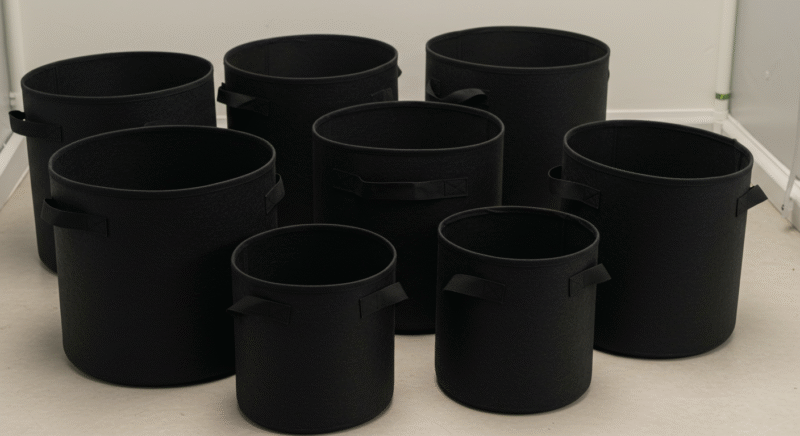
Smart Pots for Smarter Roots
If you want to take your root game up a notch, fabric pots (like Smart Pots) are a great choice. These pots are made from breathable fabric, and they do wonders for your plants’ root systems. Why? Because they allow the roots to air prune naturally.
Here’s how it works: when the roots hit the sides of a fabric pot, they’re exposed to air. This exposure stops them from growing in circles and becoming root-bound. Instead, the roots prune themselves and branch out, creating a dense, fibrous root network. More roots mean your plants can absorb more nutrients and water, which leads to bigger, healthier plants.
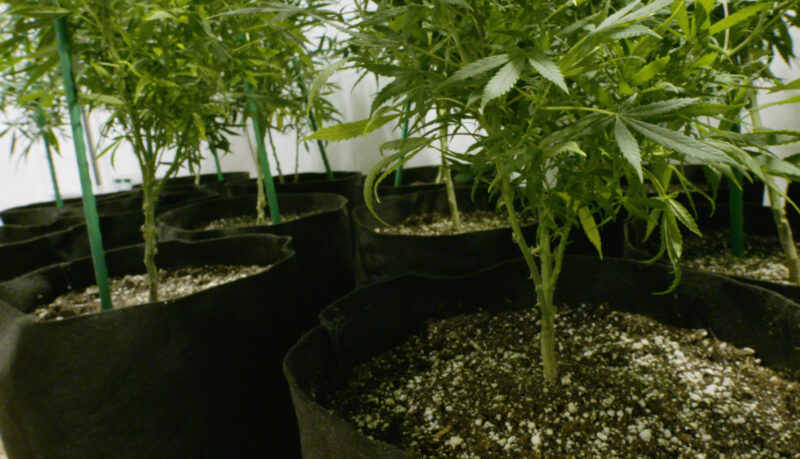
Another benefit of fabric pots is the excellent aeration they provide. The breathable material allows oxygen to reach the roots, which is crucial for plant health. Plus, fabric pots help prevent overwatering. Excess water evaporates through the fabric, reducing root rot risk. However, this also means you’ll need to water more often, as fabric pots dry out quicker than plastic ones.
Fabric pots are perfect for growers who want to boost root health and don’t mind keeping a closer eye on watering. They’re great for both organic soil and coco coir setups because they provide excellent drainage and aeration.
Air Pots
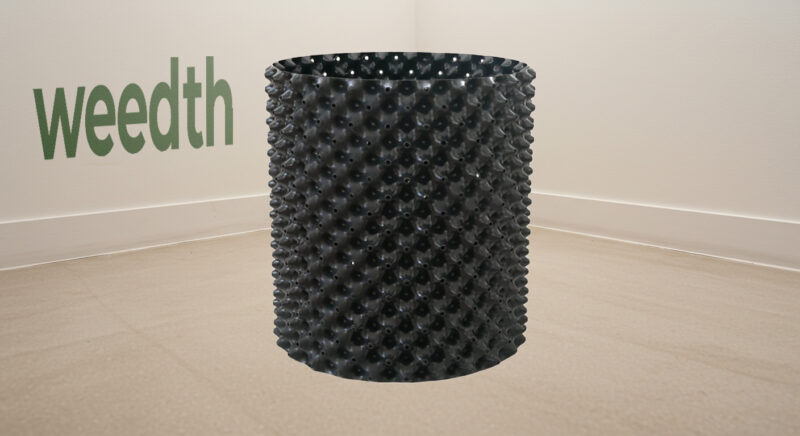
Pots for Cool Stronger Roots
Next up are air pots, which are all about maximizing root development. These containers have a unique design with perforated sides that allow the roots to breathe and grow in a way that’s similar to fabric pots—but with even more focus on air exposure.
The key to air pots is air pruning. As roots grow toward the edge of the pot, they’re exposed to air, which prunes them and encourages them to grow laterally, filling the container with a healthy, fibrous root system. This prevents roots from circling and becoming root-bound, a common problem with traditional plastic pots.
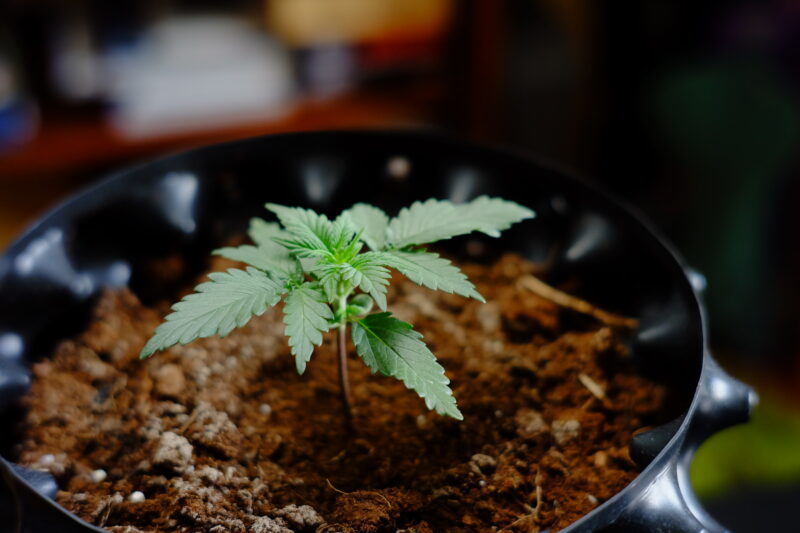
Air pots also offer fantastic drainage. The perforated design allows excess water to escape easily, meaning you’re less likely to deal with overwatering and root rot. Plus, because air pots promote healthier root systems, your plants can grow bigger and faster without needing huge containers. They’re perfect for small indoor grow spaces where you want to maximize plant size without using massive pots.
The downside to air pots? Like fabric pots, they dry out fast because of all that airflow. You’ll need to water more frequently to keep your plants happy. And they can be a little tricky to fill with soil—those holes can let some soil slip through while you’re getting everything set up.
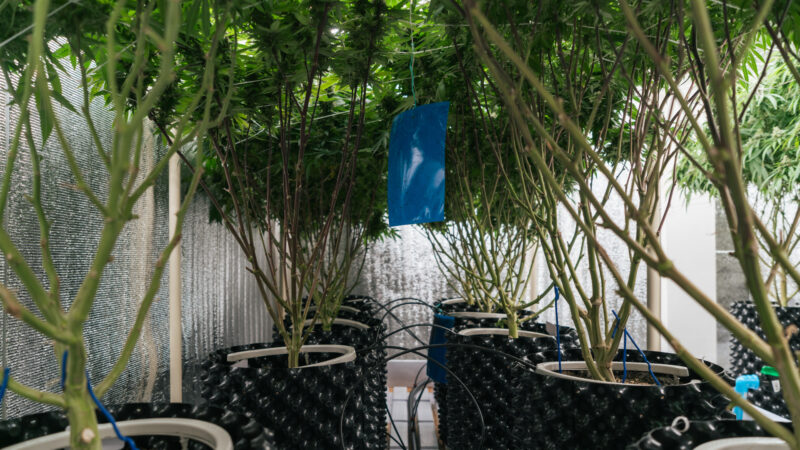
If you’re serious about maximizing root growth and don’t mind the extra attention to watering, air pots are a fantastic option. They’re ideal for experienced growers who want to get the most out of their indoor space.
Plastic Grow Bags
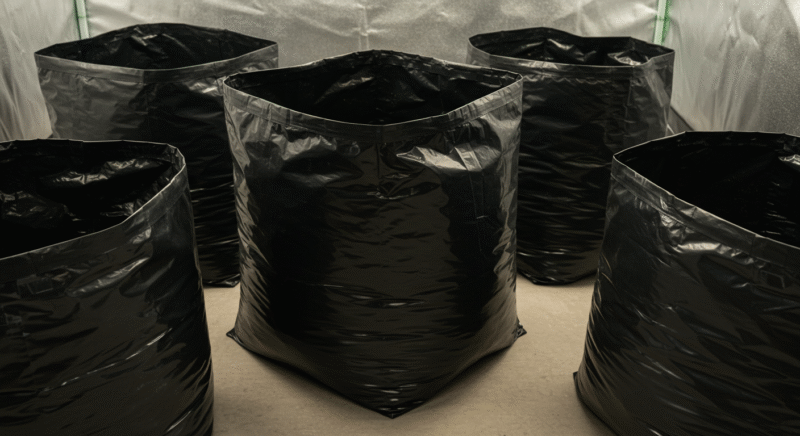
Simple and Effective
If you’re on a budget, plastic grow bags might be just what you’re looking for. These are some of the most affordable containers around, and they’re super easy to use. Grow bags come in a variety of sizes and are perfect if you’re working in a tight space or growing lots of plants.
What makes plastic grow bags great is their price and flexibility. They’re lightweight making them easy to move, and you can pack them tightly in small grow rooms to maximize space. They also come with pre-punched drainage holes, which are crucial for preventing overwatering and allowing excess moisture to escape.

The downside? Plastic grow bags are not very durable. They’ll likely only last for one or two grow cycles before they start to tear or wear out. Also, because they’re flexible, they don’t support your plants’ roots much. Larger plants can become unstable, especially if you move them around.
If you’re looking for a temporary, low-cost solution or you’re growing on a budget, plastic grow bags are a solid choice. They’re great for getting the most out of a small grow space without breaking the bank.
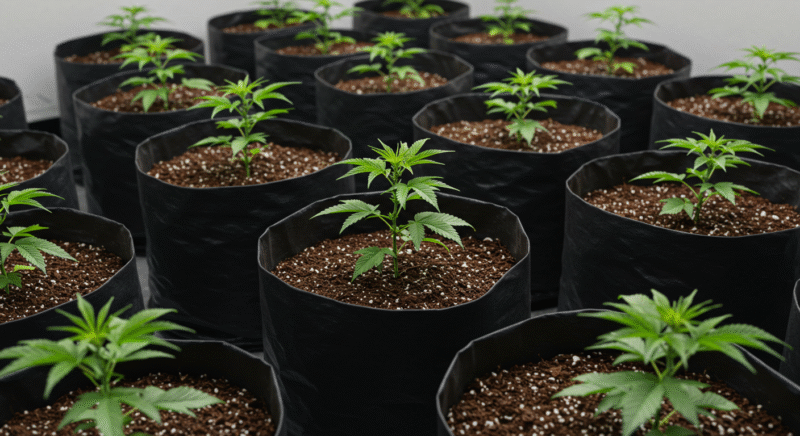
Tip:
Some soil brands sell ready-to-use grow bags that come pre-filled with soil and are specifically designed to serve both as the growing medium and the container. You simply need to cut open the top of the bag and punch holes at the bottom to ensure proper drainage. These bags often feature an integrated drainage layer, and their cylindrical shape helps them stay upright and stable during use.
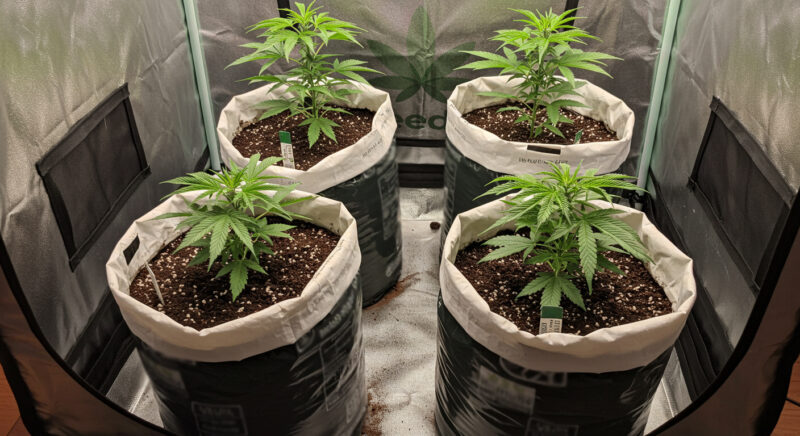
As an alternative, you can also reuse standard soil packaging as makeshift grow bags. However, these bags are not engineered to remain upright when wet. After watering, they may collapse or fall over, potentially spilling all of the soil. If you choose to go this route, make sure to add external support or place the bag inside a crate or another container to reduce the risk of tipping—this is especially important in indoor grow spaces.
Smart Pots with Handles
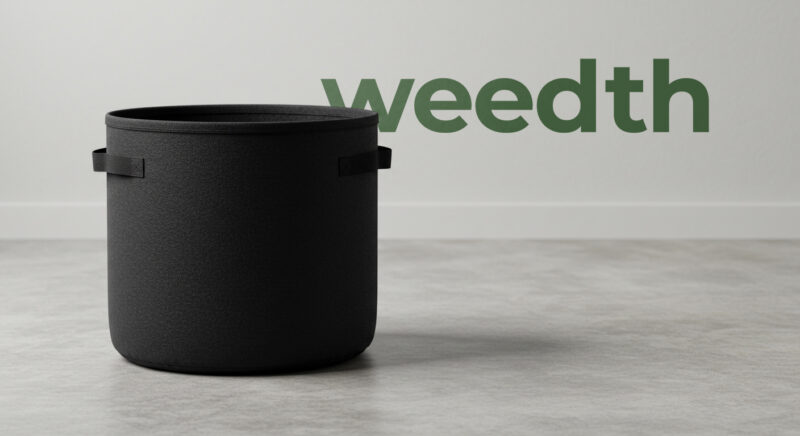
Easy Mobility
Sometimes you need to move your plants around for better light exposure or to make room for other plants. That’s where Smart Pots with handles come in and these fabric pots have all the benefits of regular fabric pots—air pruning, aeration, and good drainage but with the added convenience of built-in handles for easy transport.
The handles make it simple to lift and reposition your plants without damaging the roots or the container itself. This is especially handy for indoor grows where you might need to rotate plants regularly to ensure even light distribution.
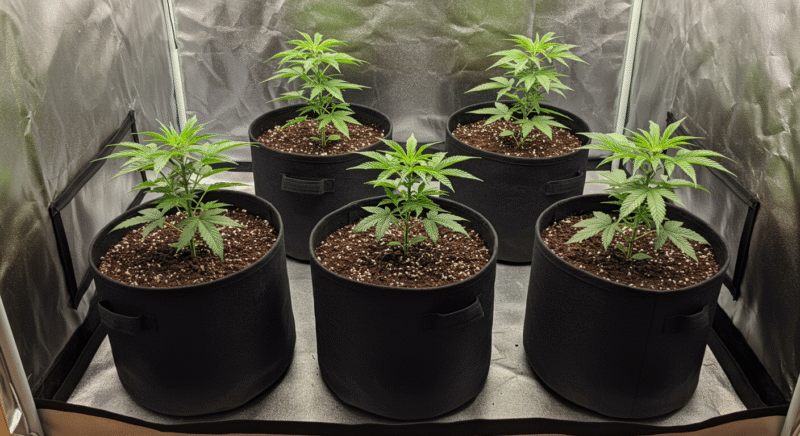
Like standard fabric pots, Smart Pots with handles require more frequent watering due to their breathable nature, and the handles can cause some extra wear and tear over time, especially if you’re moving them around a lot.
If you’re the type of grower who needs to move your plants frequently or you’re working in a dynamic indoor space, Smart Pots with handles are a fantastic option. They provide the flexibility to reposition your plants while still promoting healthy root development.
Net Pots

Hydroponic Growers Essential Pots
Net pots are essential containers for hydroponic growers. These mesh-like pots allow roots to grow through the sides and bottom, giving them direct access to the nutrient solution in your hydro system.
Net pots are ideal for hydroponics because they maximize root exposure to oxygen and nutrients. The open structure lets roots expand freely into the nutrient solution, ensuring they’re constantly taking in what they need. This promotes faster growth and bigger yields. They’re also reusable, making them a great long-term investment for hydro systems.
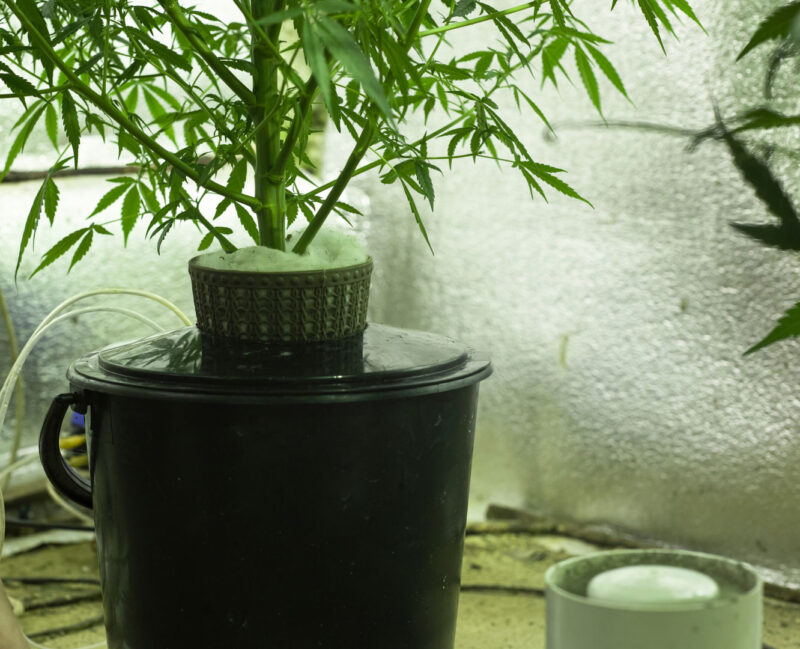
Net pots aren’t designed for soil. They’re built specifically for hydroponic or aeroponic setups, so if you’re a soil grower, you’ll need to look at other options. Additionally, net pots don’t provide much support, so you’ll need to use trellises or stakes to keep your plants upright as they grow.
If you’re thinking of a hydroponic setup and using net pots can provide maximum root exposure to nutrients for your plants. Net pots are durable, easy to use, and essential for rapid root growth in water-based systems.
Wooden Beds and Raised Planter Boxes
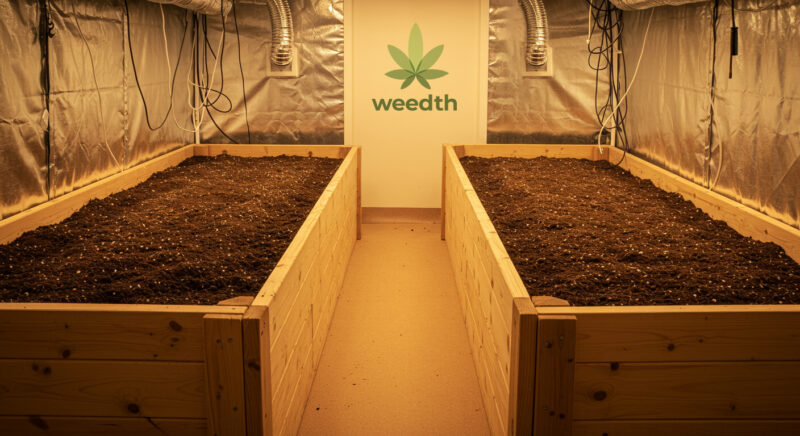
Wooden beds or raised planter boxes are an excellent option for large-scale indoor growth. These allow you to grow multiple plants in the same soil bed, giving their roots plenty of space to spread out and develop naturally. Wooden beds are perfect for organic and no-till growers who want to replicate outdoor growing conditions inside.
What’s great about wooden beds is that they give your plants unlimited root space, allowing them to grow large and develop robust root systems. This leads to bigger plants and ultimately higher yields. Wooden beds are sustainable so you can reuse them for multiple grows, and they promote a natural ecosystem in the soil.
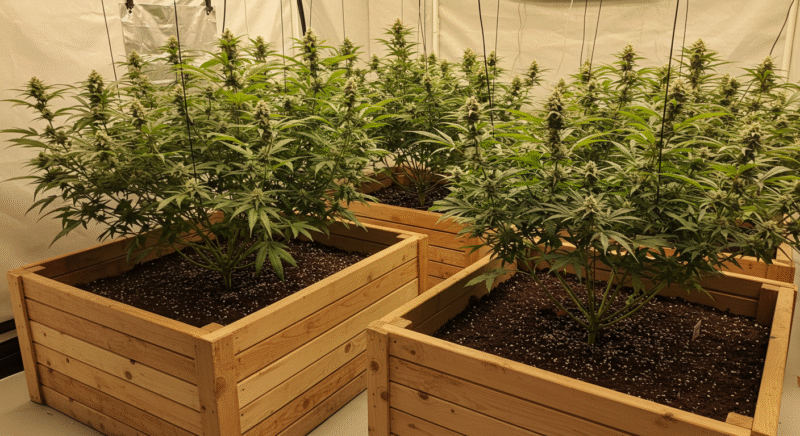
Wooden beds take up a lot of space, once they’re set up and they’re not easy to move. They’re also more labor-intensive to maintain than pots or grow bags. You’ll need to carefully manage watering and feeding to ensure all your plants get equal access to nutrients, especially when growing multiple plants in the same bed.
If you’re an experienced grower with a large indoor space and a long-term plan, wooden beds are a great choice. They’re ideal for organic growers who want to create a sustainable, long-term growing environment.
Preparing Your Container for Planting
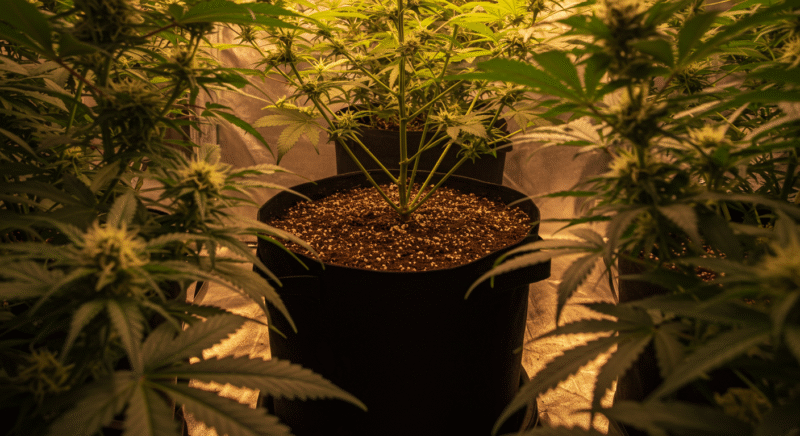
A healthy cannabis plant begins with a well-prepared container. While many growers focus primarily on soil quality or nutrients, the container plays a foundational role in the plant’s development. An ideal container doesn't just hold the plant upright, it must allow proper drainage, support root expansion, and maintain consistent moisture and airflow. Whether you’re growing one plant or a room full of them, investing time into preparing your container properly will pay off throughout the entire grow cycle.
1. Choosing the Right Container
By this point, you’ve likely explored different container options like fabric pots, plastic nursery pots, air pots, and others. Each has its pros and cons. Instead of repeating what’s already covered, let’s focus on the core requirement: breathability and drainage.
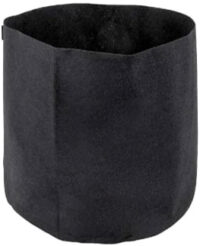
For example, fabric pots naturally offer excellent air pruning and drainage, while traditional plastic pots may retain moisture longer. As long as your container allows for air exchange and drainage, it’s suitable for cannabis cultivation. The key is to match your container to your grow style, watering frequency, and environment.
2. Ensuring Proper Drainage Holes
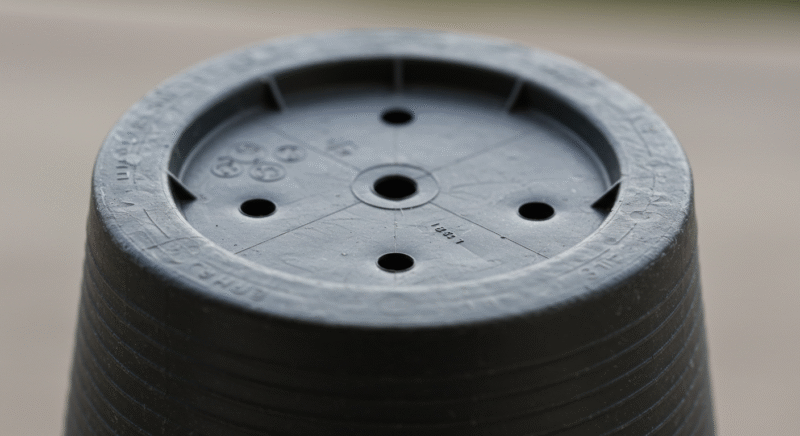
No matter which container type you choose, drainage holes are non-negotiable. Cannabis roots require oxygen, and standing water can suffocate them by pushing oxygen out of the root zone. Without a way for excess water to escape, roots sit in waterlogged conditions, which leads to root rot, stunted growth, or even plant death.
Most store-bought containers come with pre-drilled holes at the bottom. If yours doesn’t, you’ll need to drill them yourself. Use a power drill or hot nail to create several evenly spaced holes. A good rule of thumb is to ensure that water can drain within a few seconds of pouring into the pot. Holes should be large enough to let water pass through, but small enough to retain the soil.
Don’t forget to check if your container has side drainage holes. While bottom holes are essential, side holes—placed slightly above the bottom—can help eliminate stagnant water buildup and promote better aeration at the lower root level.
3. Creating a Drainage Layer
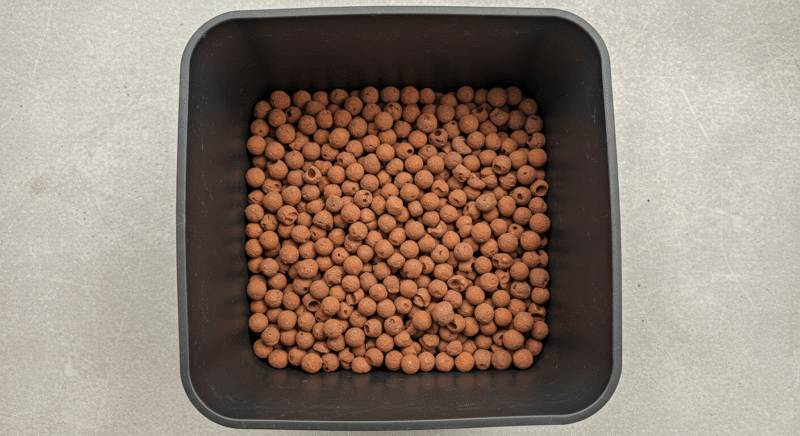
For added protection and long-term soil health, it’s recommended to add a drainage layer at the bottom of your container before filling it with soil. This layer prevents the soil from sitting directly against the drainage holes and becoming compacted over time, which would restrict water flow and suffocate roots.
Recommended drainage materials include:
Expanded clay pellets (LECA): Often used in hydroponics, these provide strong drainage while remaining pH-neutral and reusable.
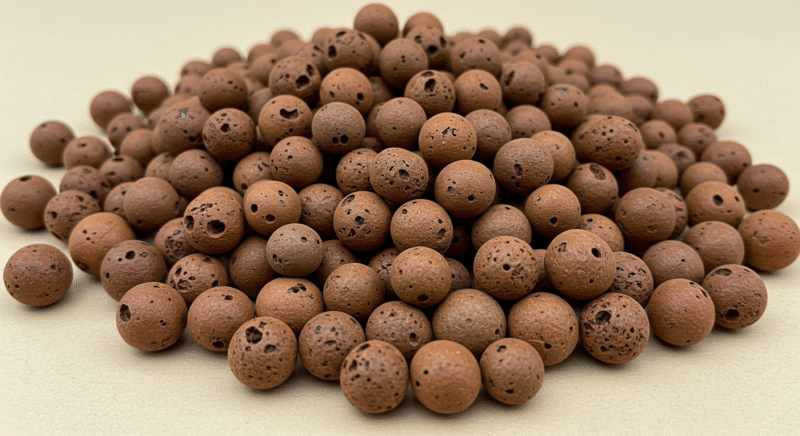
Lava rock: Lightweight, porous, and excellent for aeration and drainage.
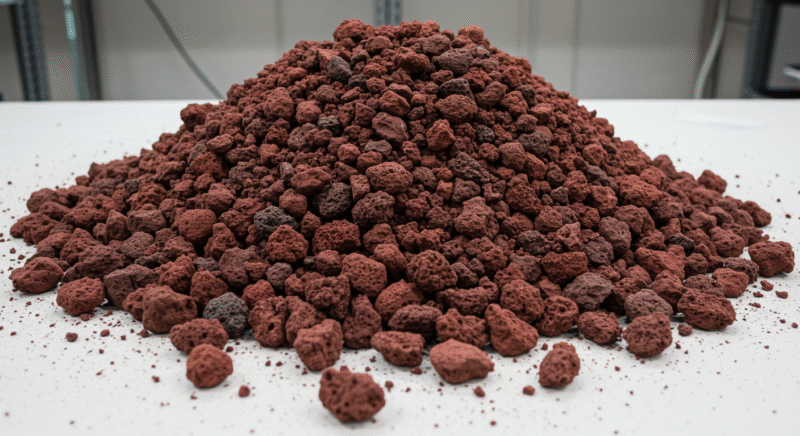
Perlite: Very light and porous, it prevents soil compaction and enhances airflow.
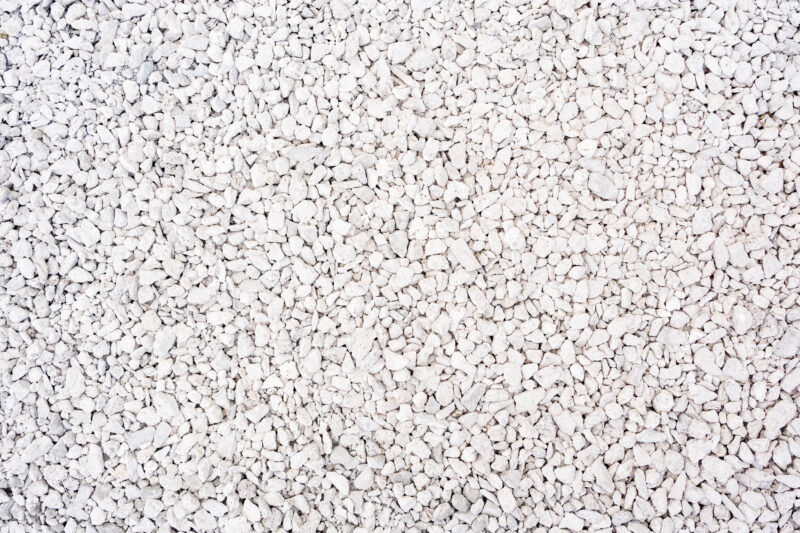
Pebbles: Smooth, rounded stones that help create space for water to drain freely.
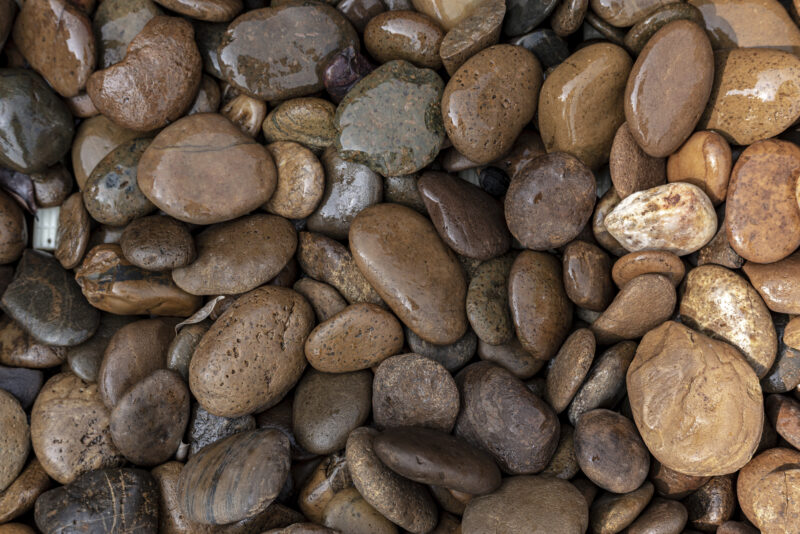
Pumice: Similar to perlite but heavier; helps improve structure and drainage in larger pots.
Coarse sand (horticultural grade): Can be used in thin layers to support drainage, though it’s less effective on its own.
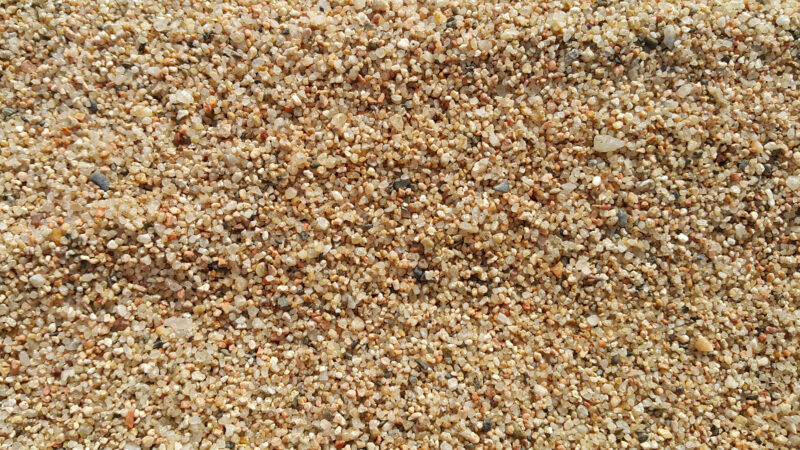
Important Note:
Avoid using rocks or pebbles collected from your garden, driveway, or public areas without proper treatment. These materials may harbor pathogens, pests, or mold spores that could infect your cannabis plants—especially in indoor grow environments where conditions are tightly controlled. If you choose to use natural stones, they must be thoroughly washed, boiled, or baked to ensure sterilization. However, to avoid unnecessary risk, it's strongly recommended to purchase pre-packaged, horticulture-grade drainage materials from trusted garden suppliers.
The drainage layer should be about 1–2 inches thick depending on pot size. It doesn’t replace the need for quality soil, but it acts as a safeguard against overwatering and supports healthy root development.
4. Adding Soil to the Container
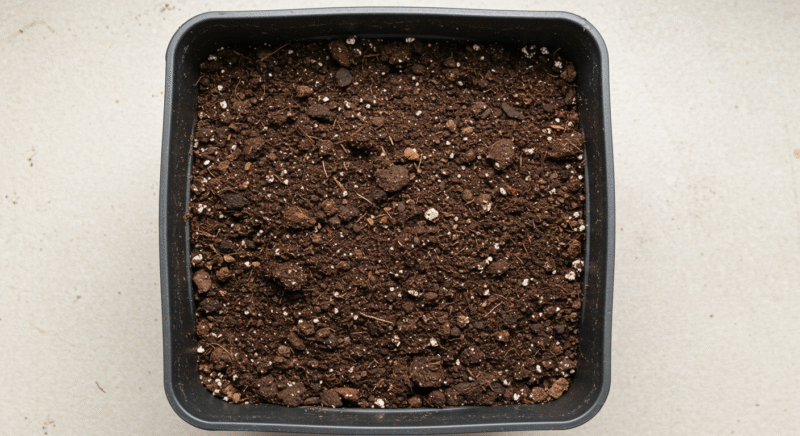
Once the drainage layer is in place, begin filling the container with your chosen soil mix. Do this gradually, layering and gently pressing the soil to remove large air gaps without compacting it too much. The top edge of the container should remain about an inch above the soil line to prevent water overflow when irrigating.
Make sure your soil is well-aerated and free from clumps. If it feels too dense or heavy, consider amending it with perlite, coco coir, or composted bark to increase porosity and air exchange. This helps roots breathe and expand, supporting stronger growth.
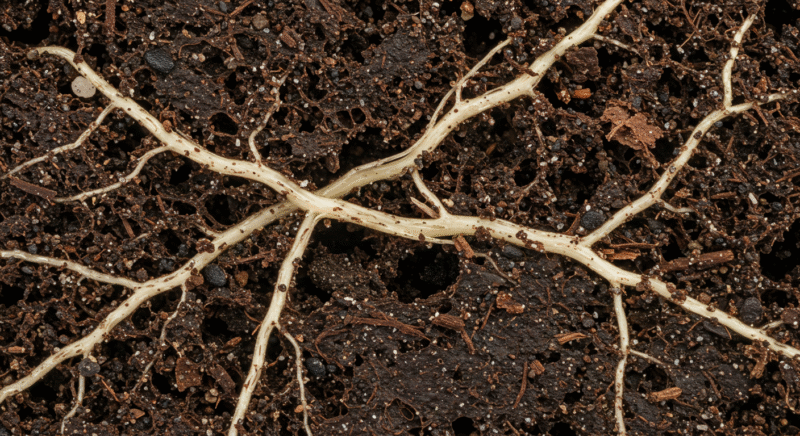
Avoid compressing the soil heavily as you fill the pot because dense soil reduces airflow and water movement. Let the soil settle naturally during the first watering, and top off only if needed.
5. First Watering and Final Checks
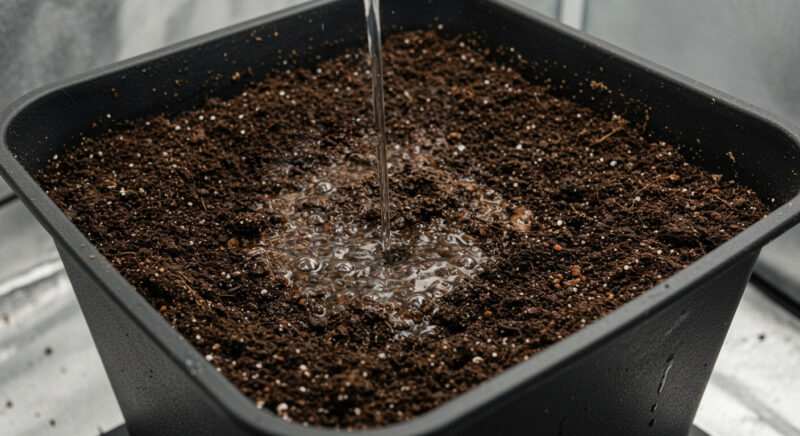
Before planting, give the filled container a full watering to observe how the soil behaves and how quickly excess water drains. This first watering helps settle the soil and reveals whether your drainage setup is effective. Watch for pooling at the bottom, overly slow drainage, or dry pockets near the top.
Check that:
-
Water drains steadily without pooling.
-
The soil doesn’t flood or compact excessively.
-
The base of the pot isn't sitting in stagnant runoff—use a saucer if needed, but be sure to empty it.
This is also a good moment to double-check your grow room's humidity and temperature levels to ensure the environment is ready for planting.
Container Size
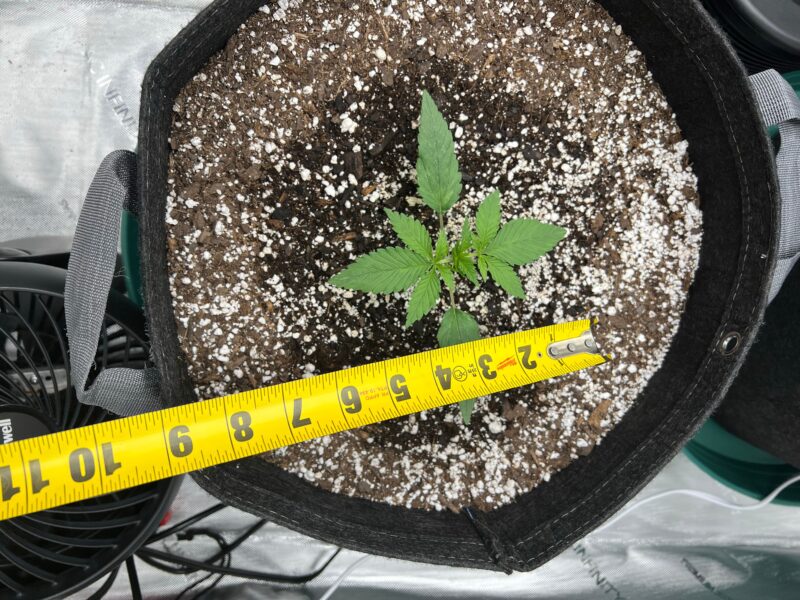
Give Your Roots Room to Grow
The size of your container will have a direct impact on how large your plants can grow. Cannabis has a deep root system, and it needs plenty of space to develop. As a general rule, start with small pots for seedlings and young plants, then transplant them into larger containers as they grow. Starting small allows you to fit more plants in your grow space initially, and once the plants outgrow their pots, you can move them to larger containers to promote further growth.
For a typical indoor grow, 3-4 gallon pots are ideal for plants that will reach around 3-4 feet in height. If you’re planning on growing larger plants, you’ll need 5-6 gallon pots or even larger containers. The key is to provide enough room for the roots to expand, which will support stronger plants and more bountiful harvests.
Note: Some growers claim that seedlings with at least 4 inches of soil to grow their taproot are more likely to become female, and report female-to-male ratios as high as 80% to 20%. There is no scientific evidence to confirm that root depth directly influences the sex of cannabis plants. This idea is considered anecdotal and should be treated as a grower’s myth rather than a proven fact. The most reliable way to ensure female plants is to use feminized seeds.
Spacing
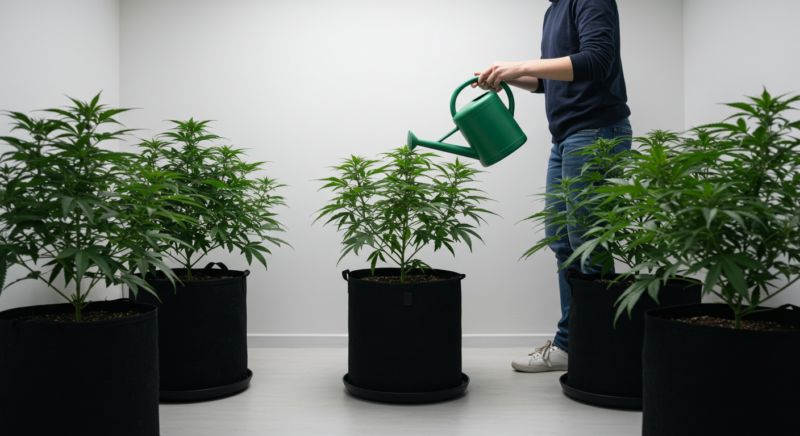
Maximizing Growth Potential
When setting up your grow area, the amount of space you give each plant is crucial to its overall development. A plant’s space depends on its height and growth pattern. Taller plants tend to spread out more, while smaller, bushier plants need less horizontal room. It’s important to provide enough space for each plant to receive adequate light, air circulation, and room for its roots to develop.
Overcrowding can lead to competition for light and nutrients, which can stunt growth and reduce yields. As a general guideline, allow for 1-2 square feet of space per plant. This ensures that each plant has room to grow without being cramped or competing with its neighbors. Proper spacing also helps improve air circulation, which reduces the risk of mold and pest infestations.
Importance of Clean Containers
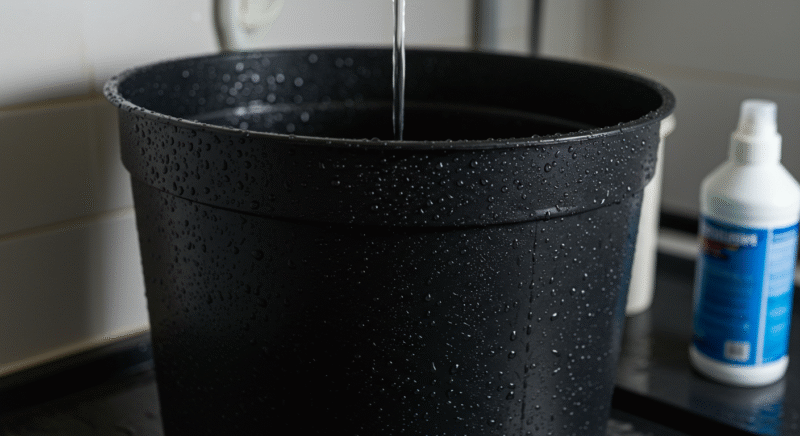
Whether you’re using new or reused containers, cleanliness is important. Dirty containers can harbor fungi, bacteria, and pests, which can contaminate your soil and harm your plants. If you’re using a container that has been used before, sterilize it thoroughly with hot water and bleach to remove any potential contaminants. Even new containers should be rinsed before use to remove any residues from the manufacturing process.

